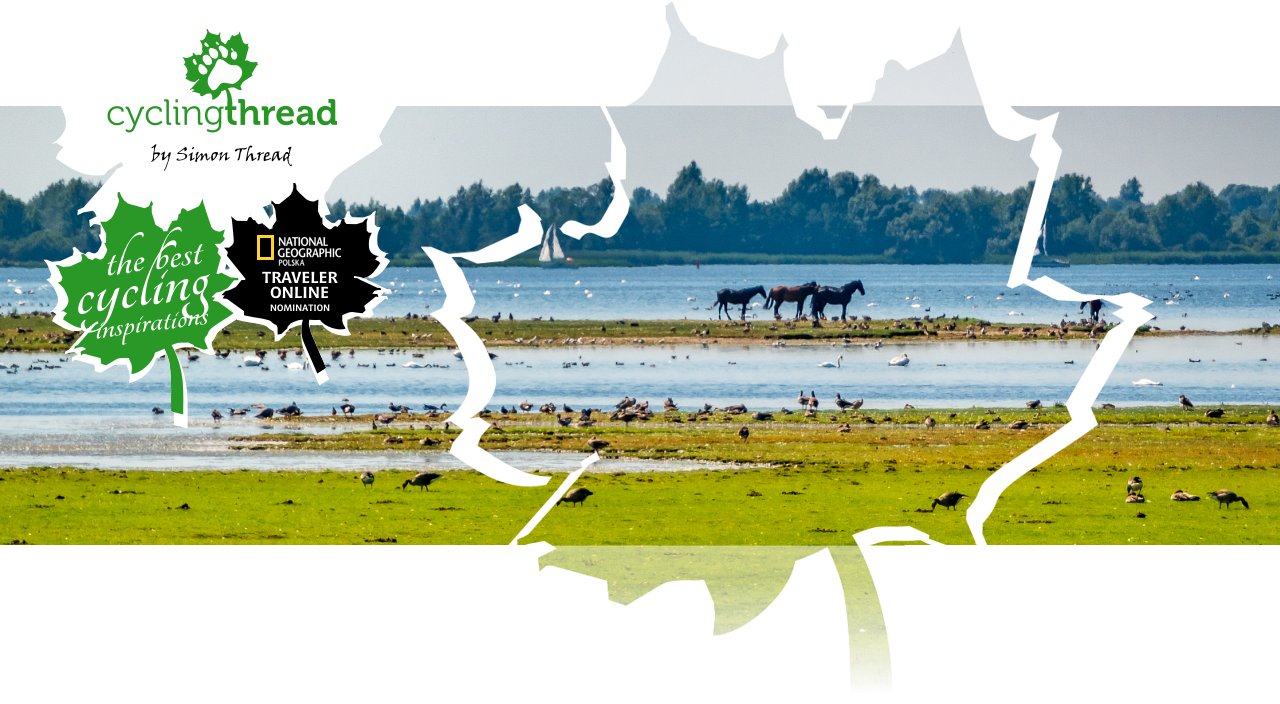
Netherlands by bicycle: the Wadden Sea, Friesland and Groningen
To the kingdom of bicycles - the Netherlands - we arrived at the final stage of our European journeys with Interrail tickets. However, we did not go to explore Dutch cities like Amsterdam, The Hague, or Rotterdam. Our goal was the serene north of the country: the extraordinary Wadden Sea and two northern provinces of the Netherlands - Friesland and Groningen. The capital of the latter - the city of Groningen - ranks first in the Netherlands in terms of bicycle share in urban transport! Spending a week in the climate of this bicycle idyll was the best possible conclusion to four weeks of cycling-rail holiday travel.
Route on the map
GPX file (GPS track): cyclingthread.com-friesland-2019.gpx
Cycling Friesland - table of contents
- To the Netherlands and the Wadden Sea
- Ferry to Ameland - the West Frisian Islands
- Cyclists in line for a separate entrance to the ferry
- One of the most beautiful cycling routes
- The fourth place in our journey with Interrail
- Leeuwarden - bikes! Bikes everywhere
- Massive bicycle parking under the train station
- And, of course, fantastic cycling infrastructure
- Start with the Frisian Museum in Leeuwarden
- Oldehove - the Frisian Leaning Tower
- The Netherlands - even bike traffic jams here
- The National Porcelain Museum is a must-see
- Friendly Northern Netherlands
- An extraordinary structure - the Mata Hari aqueduct
- Free replacement ferry for cyclists
- The oldest planetarium in Europe in Franeker
- The node system of cycling routes in the Netherlands
- In the old port of Dutch whalers
- Willem Barents was from Friesland
- On the EuroVelo 12 route along the North Sea
- The Sense of Place of Frisian artists
- The highest terp in the Netherlands - Hegebeintum
- Wierum and Moddergat - former fishing settlements
- This is what a traditional Frisian farm looks like
- Rustpunt - a resting place for cyclists
- Huge sluices between Friesland and Groningen
- Polish konik horses in Lauwersmeer National Park
- Fishing Museum in Zoutkamp
- Interior of the Fishing Museum in Zoutkamp
- The oldest continuously inhabited village in the Netherlands
- Residents of Breda remember the Poles
- Boat trip with bicycles through the Dutch canals
- The Seal Rehabilitation and Research Centre
- Menkemaborg Palace in Uithuizen
- Eemshaven - a port on the Wadden Sea
- Hanging Kitchens in Appingedam
- Hot Groningen at the end of the trip
- What to eat in the Netherlands? Kibbeling!
- Discovering the best - the unknown
- The Netherlands to officially become the Netherlands
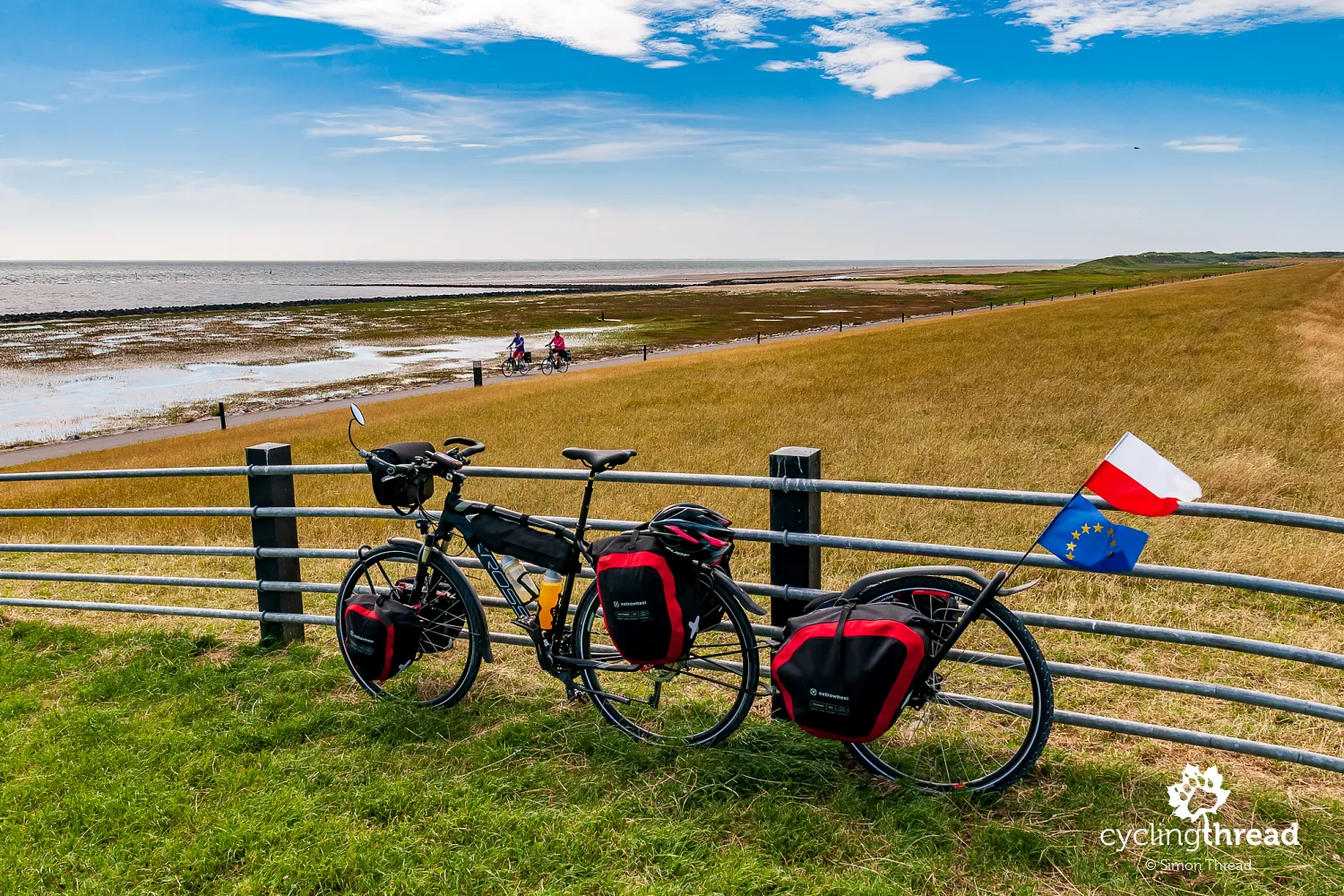
To the Netherlands and the Wadden Sea
Our inspiration for a short excursion through the Netherlands was the Wadden Sea. It's the only area of its size in the world that regularly - every about six hours, with the cycle of tides - changes its face. The Wadden Sea, located along the coasts of the Netherlands, Germany and Denmark, is at times a sea separating the European continent from the line of the Frisian Islands, and a few hours later, it transforms into a sandy-muddy area, known as the wadden, large parts of which can even be crossed on foot. The diversity of animal life in the wadden has earned the Wadden Sea a spot on the UNESCO World Heritage List in 2009 (in the Netherlands and Germany, and in Denmark - in 2014).
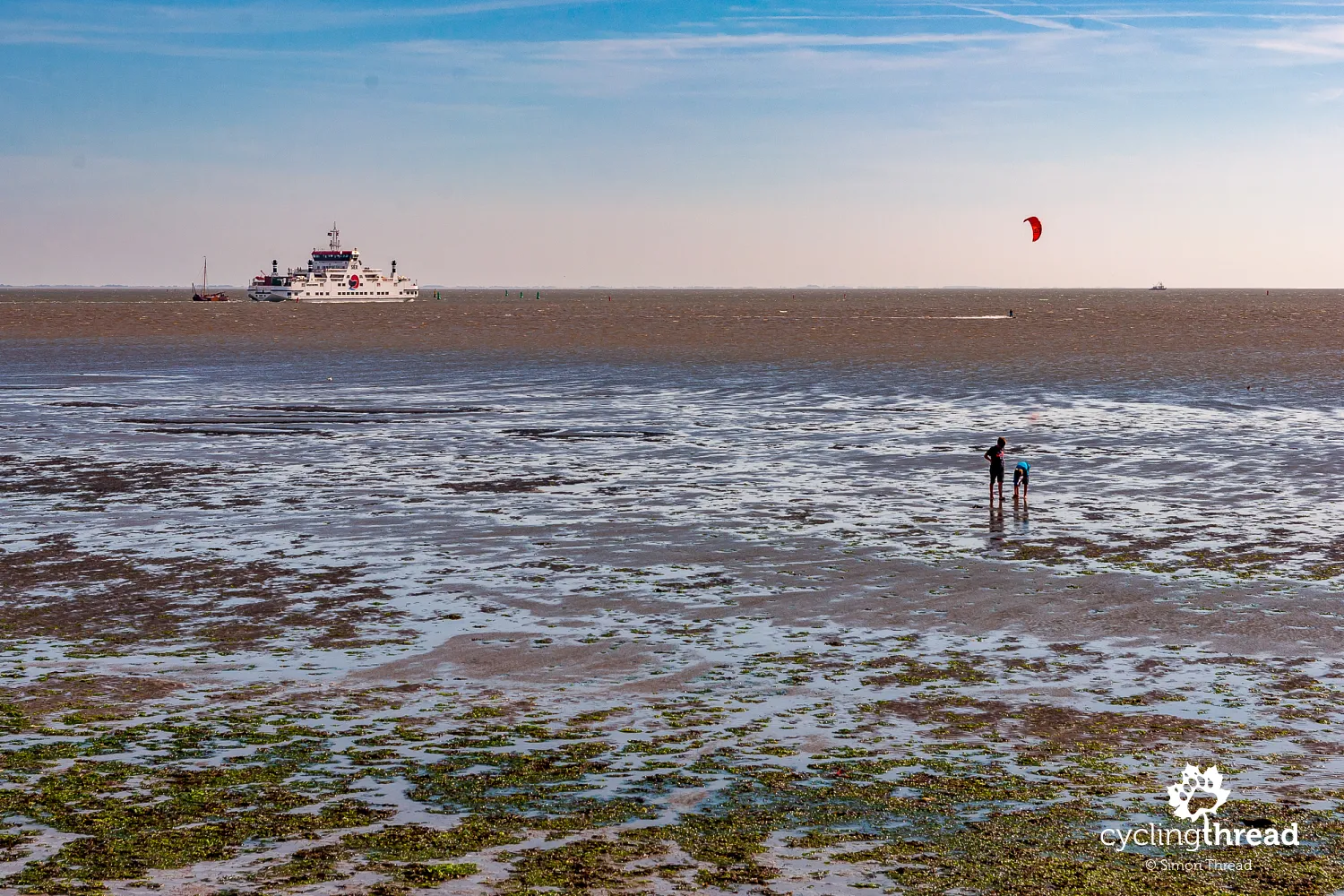
Ferry to Ameland - the West Frisian Islands
To experience the two faces of the Wadden Sea, we added a ferry trip to Ameland - one of the West Frisian Islands - to our cycling route through the Netherlands. Thanks to an online maritime tide calendar, we chose the timing of our trips to sail through the Wadden Sea at the highest water level "there" and return during the lowest. Like any other sea voyage, for example, the catamaran trip of Gdańsk Maritime to the Hel Peninsula, we set off in the morning from a harbor near the town of Holwerd, surrounded by waving sea waters. When we returned in the evening - the water level had dropped by more than a meter, revealing vast sandy expanses around and showing a narrow, twisted shipping channel through the so-called wadden, where two vessels could pass each other.
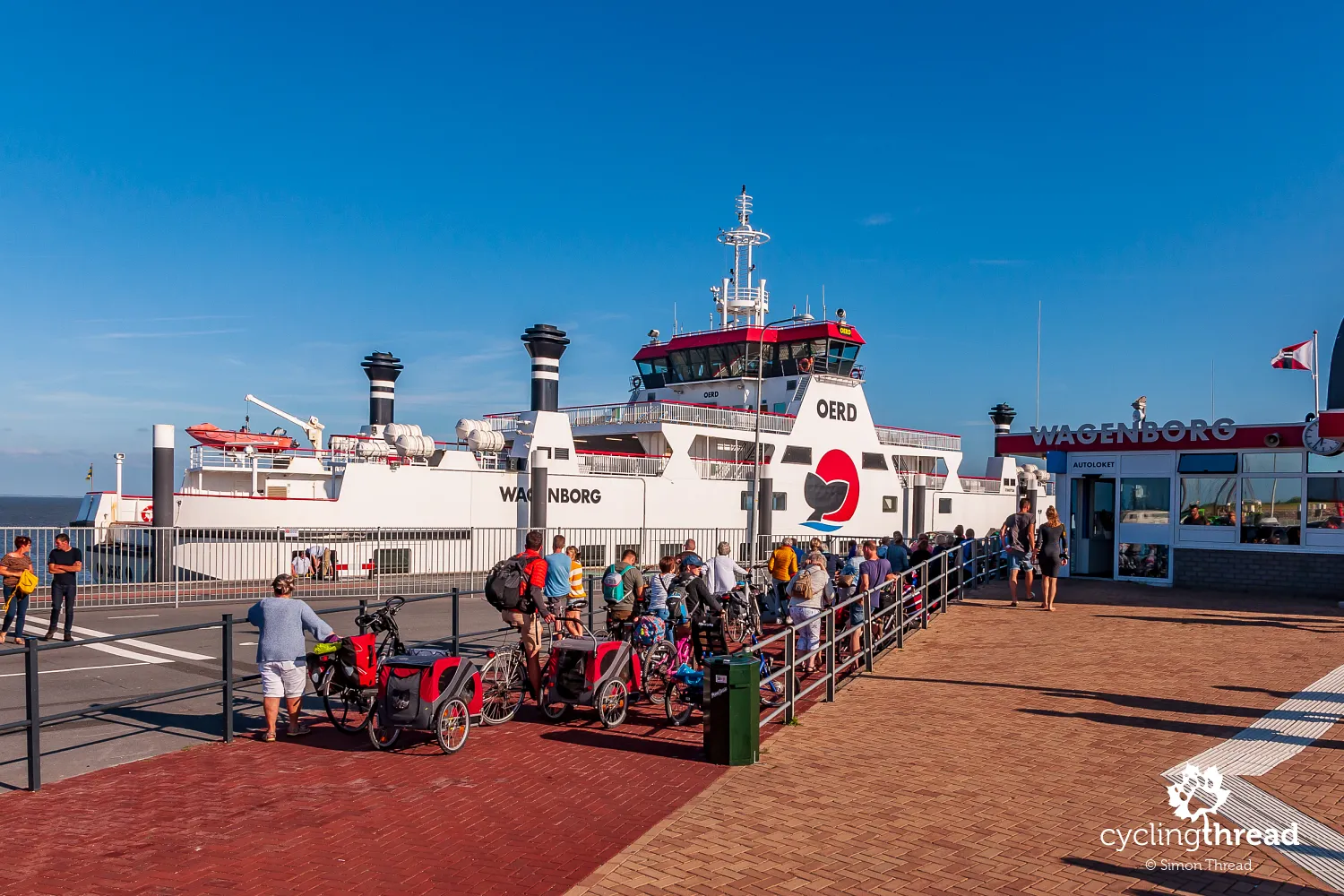
Cyclists in line for a separate entrance to the ferry
In areas deserted by the sea water for a few hours, local guides organize walking tours of the Wadden Sea. During these tours, they not only lead participants from the mainland to one of the islands several kilometers away but also show how extraordinary is the life hidden in this unassuming area. The type of substrate changes with the distance from the mainland, from muddy to sandy, and with it, its inhabitants. Walking on the wadden, we step next to a huge number of aquatic organisms, snails, crabs, mussels, sometimes small fish surprised by the tide, preyed upon by flocks of birds. From the moving ship, we managed to spot a seal resting on a sandy bank.
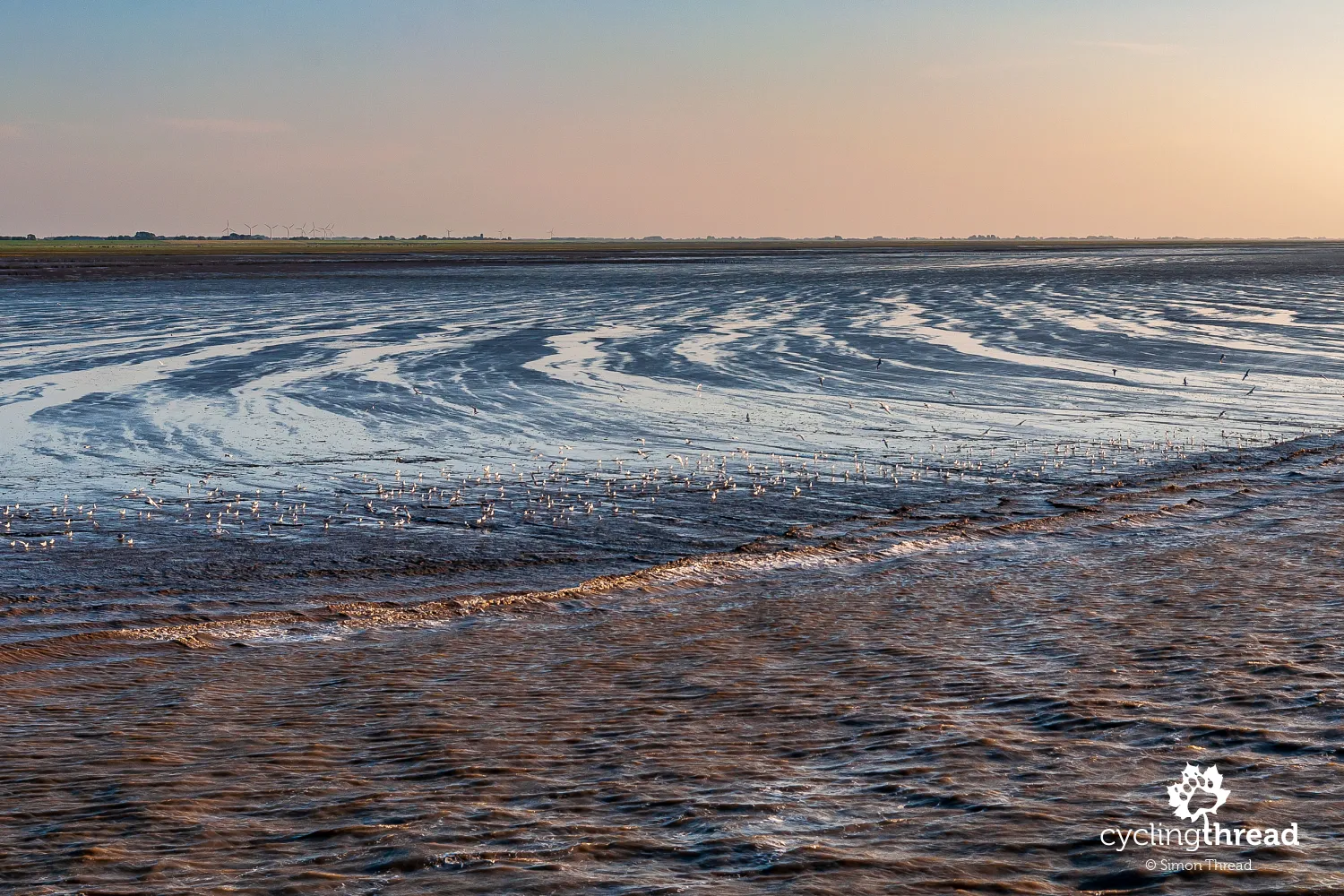
One of the most beautiful cycling routes
On the island of Ameland, during a loop around the western part of the island, we cycled on one of the most beautiful cycling routes I have ever been on. The natural, gravel path starts in the town of Nes at Natuurcentrum Ameland and runs through a gently undulating, natural area along the border of the dune area on the north of the island. It's a popular cycling route among the Dutch, coming to Ameland for a vacation, intersected from time to time by accesses to huge, wide beaches, wider than Baltic beaches in Pomerania. The cycling loop turns back near the 55-meter-tall Bornrif lighthouse, which is open to visitors. In the four small villages on the island, many examples of traditional fishing architecture can be seen.
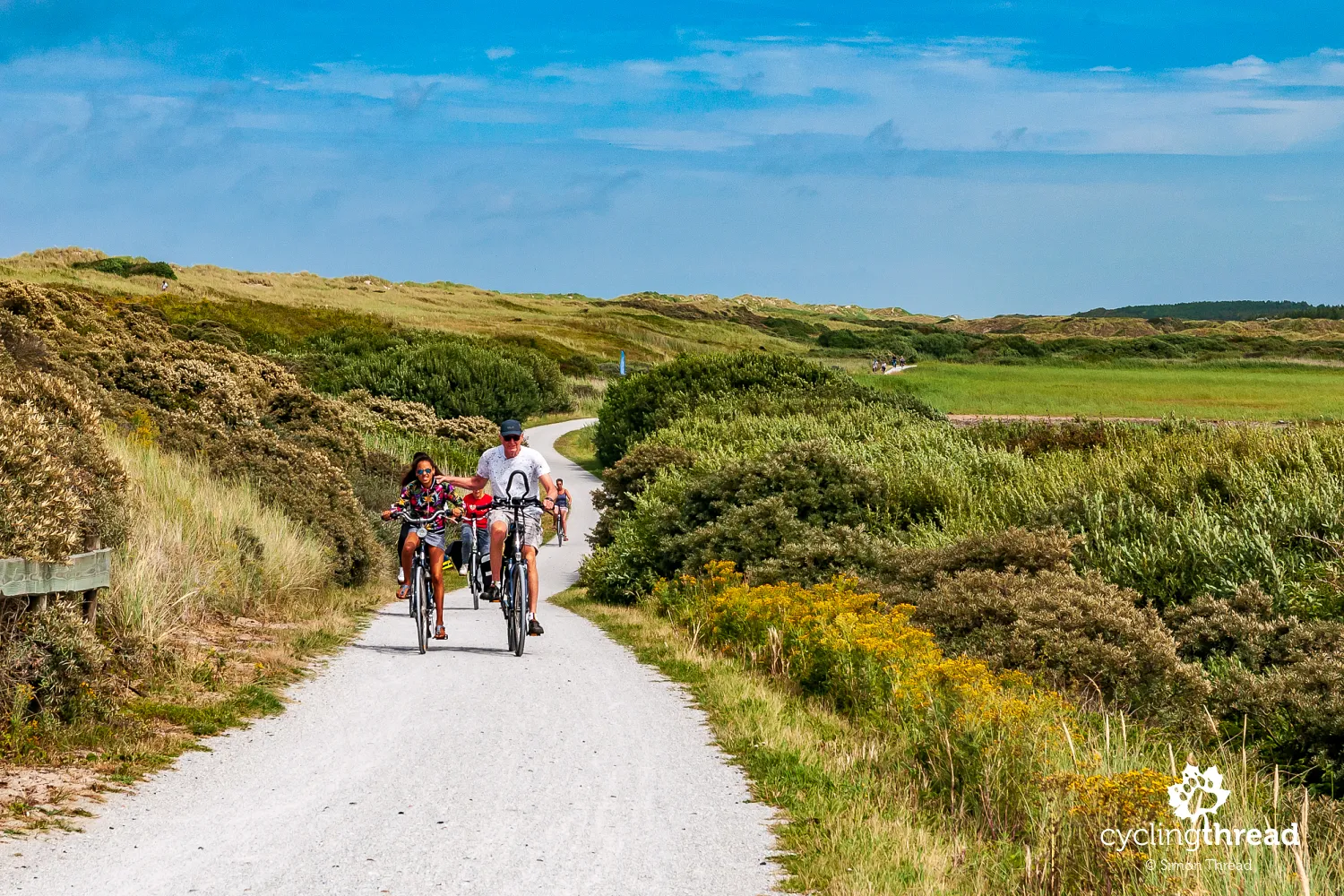
The fourth place in our journey with Interrail
But before we reached the Wadden Sea, we had to travel a long way from the previous region of our journey through Europe with Interrail tickets. Our Interrail trip took us through the Dresden Elbland, Austria and South Tyrol - each region offering its own landscapes, cultures and cycling experiences. What made this journey truly special was the freedom Interrail gave us: the ability to travel flexibly between countries without having to return to a starting point, the ease of taking our bikes with us, and the relaxed pace that let us focus entirely on discovering new places rather than stressing about logistics.
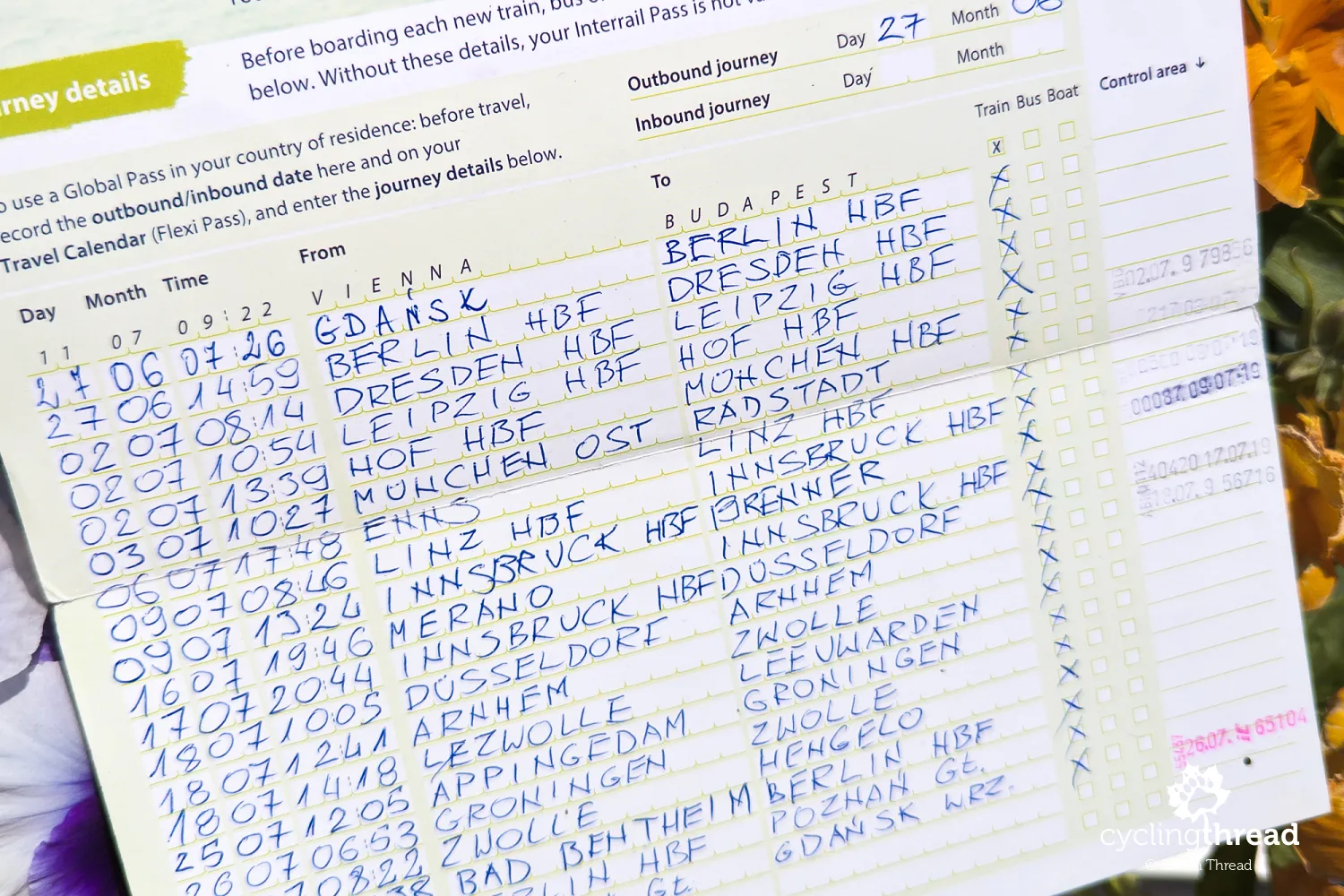
Leeuwarden - bikes! Bikes everywhere
We arrived in Friesland after spending a night in a couchette on a night train from Innsbruck, with transfers along the way in Düsseldorf, Arnhem and Zwolle. We got off in Leeuwarden, a city of over a hundred thousand in the north of the Netherlands. It's the capital of the administrative province of Friesland, occupying the western part of the historical region of the same name. The city lies just a short ride from the coast and the Wadden Sea, making it a perfect starting point for exploring the quiet, flat landscapes of northern Friesland, where cycling paths stretch between sleepy villages, historic dikes and open fields under a wide sky.
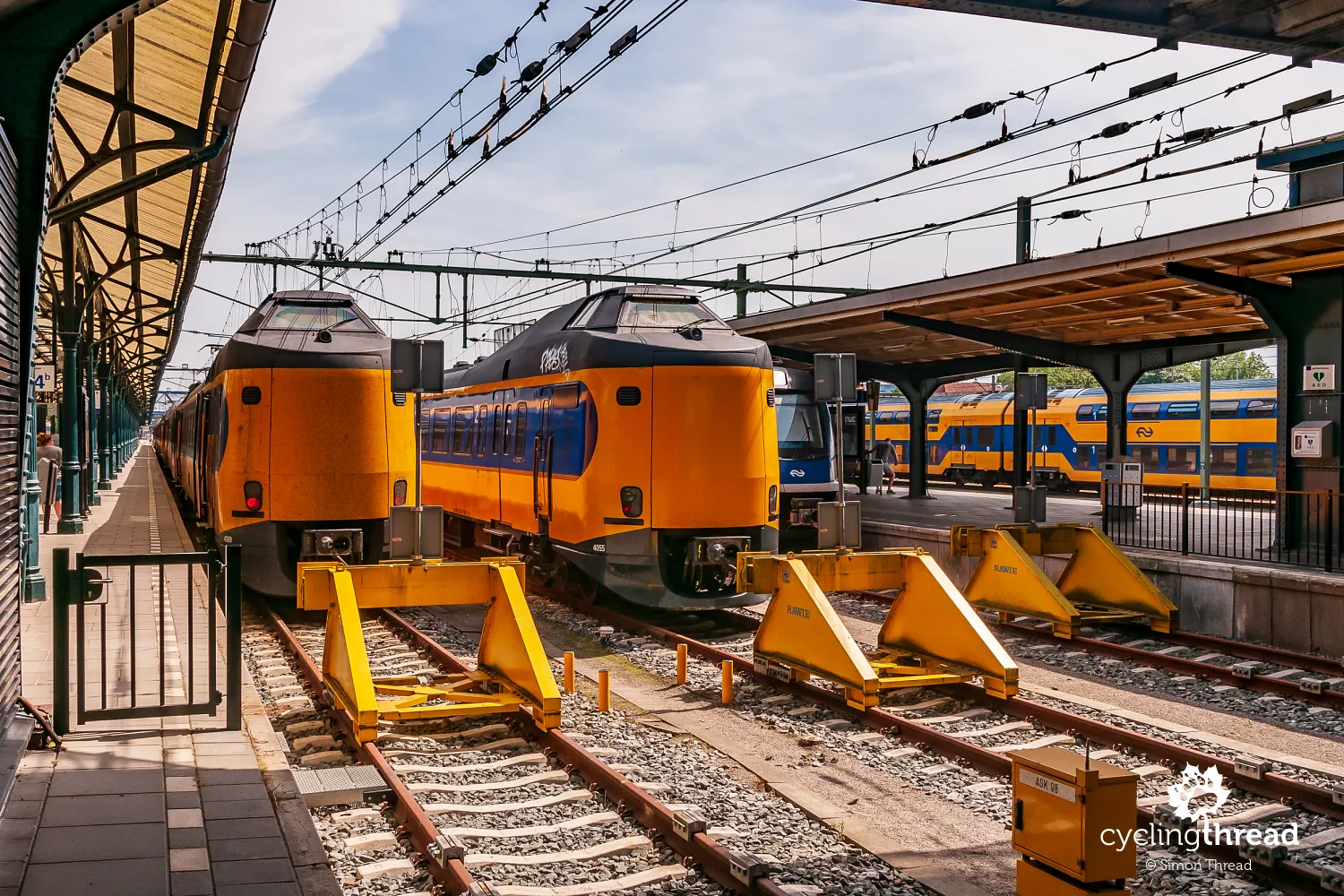
Stepping out of the Leeuwarden train station, we were greeted by bikes at every turn. The journey from the station to our rented apartment was a crash course in Dutch-style cycling. The golden rules are simple: don’t dawdle, never stop on the bike path, and signal your intentions clearly - whether stopping or turning. Thankfully, adapting to this bike-rich culture was easier than anticipated. Yet, to my surprise, unlike in previous stops on our journey, my Extrawheel trailer sparked no interest here in the Netherlands. The Dutch, accustomed to a variety of original bicycles and advanced biking solutions, seemed to barely notice my "third wheel".
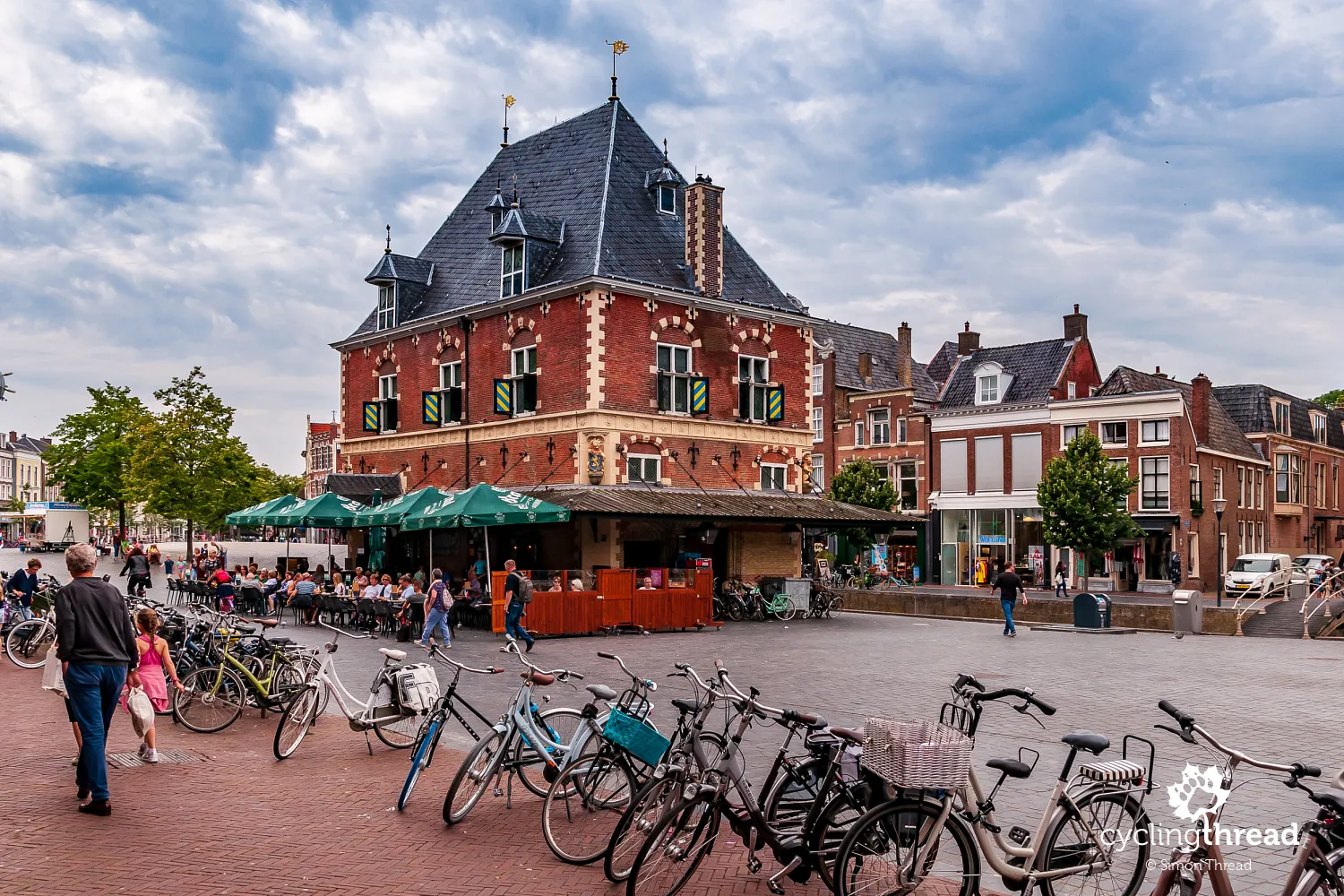
Their bikes, on the other hand, caught my eye instantly! On my first day wandering through the streets of Leeuwarden, my neck ached from turning every which way. And it wasn’t just the attractively and smartly dressed cyclists (cycle chic!), but their and their partners’ bikes that fascinated me. Among them, cargo bikes, still a rarity in our country, were commonplace, often ferrying the most precious cargo of all - children. Sometimes the kids were tucked under transparent canopies, other times they rode in open cargo boxes - the organization and safety of Dutch cycling culture encourages even the most delicate family members to be transported this way. And surprisingly, the presence of scooters on bike paths, which might startle us, doesn’t seem to detract from the safety.
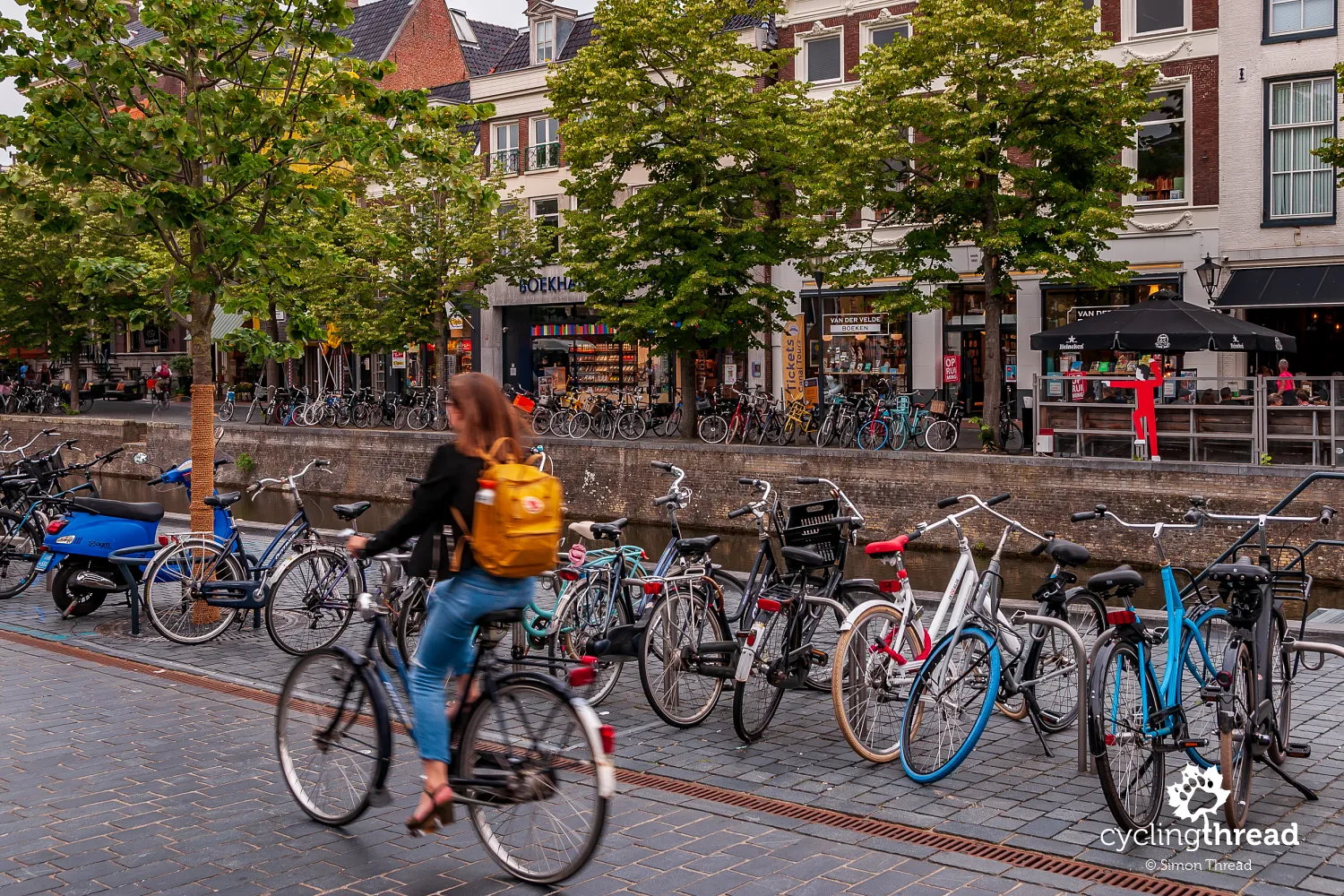
Massive bicycle parking under the train station
The popularity of bicycles is also evident in the parking facilities at public amenities - schools, office buildings and train stations. If you find yourself in Groningen, don’t hesitate to venture into one of the underground entrances in front of the beautiful, historic station. There, you’ll discover... possibly tens of thousands of bicycles gathered in an underground hall. The sight was almost unbelievable - Groningen boasts a parking facility so vast that the photo below shows perhaps just a third of its area...
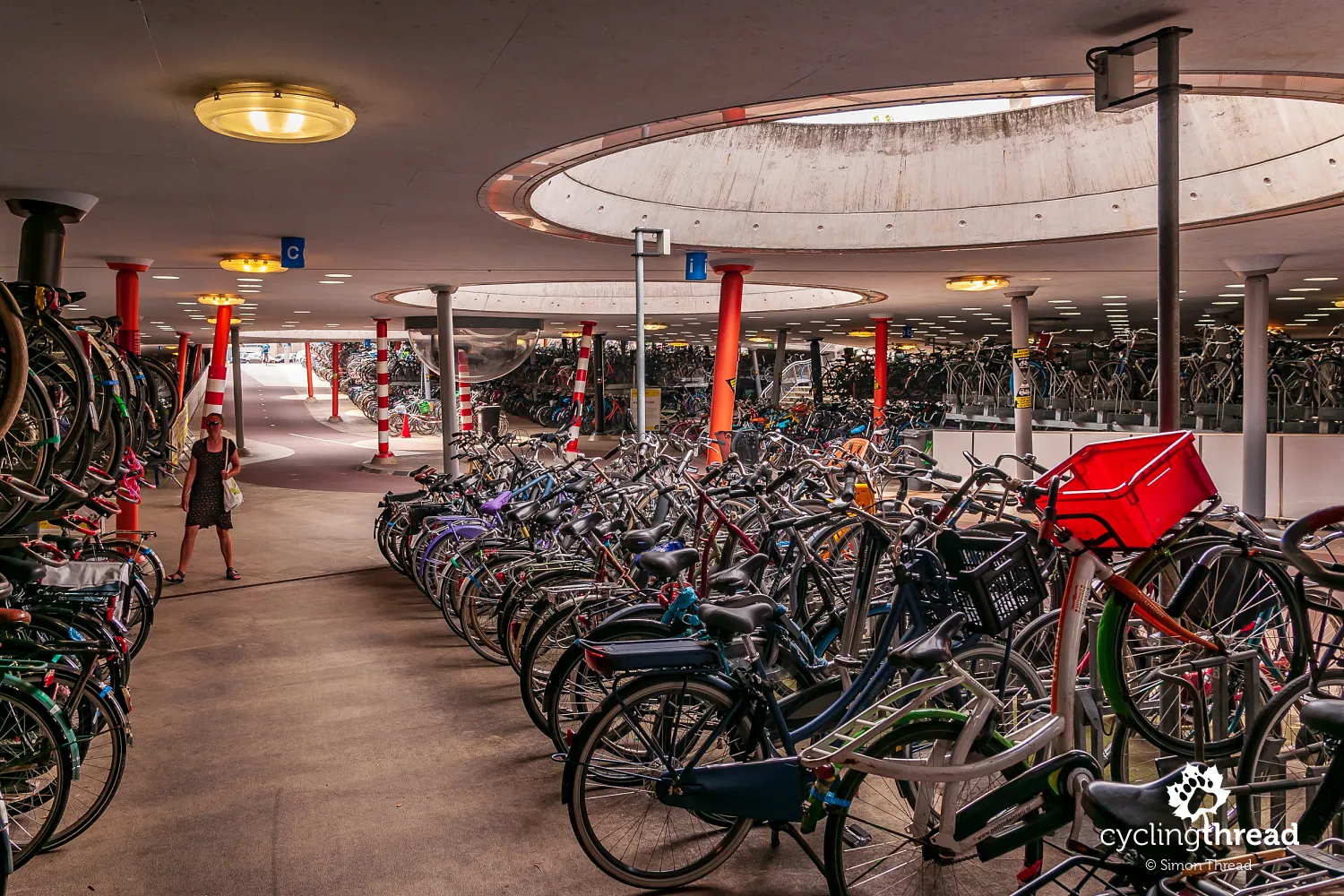
And, of course, fantastic cycling infrastructure
The massive number of cyclists in the Netherlands wouldn’t be possible without the excellent urban cycling infrastructure, consisting of separated bike lanes. The two mature women from Leeuwarden, captured in the photo below by sheer chance, are the perfect illustration. Returning from tennis, they chat side by side on a wide bike lane, relaxed and secure, even though - like nearly all Dutch cyclists - they aren’t wearing helmets. Thanks to the outstanding infrastructure throughout the Netherlands, over a third of the population cycles to school, work or for leisure. There are cities like Groningen, where the share of bikes in urban transport is even higher.
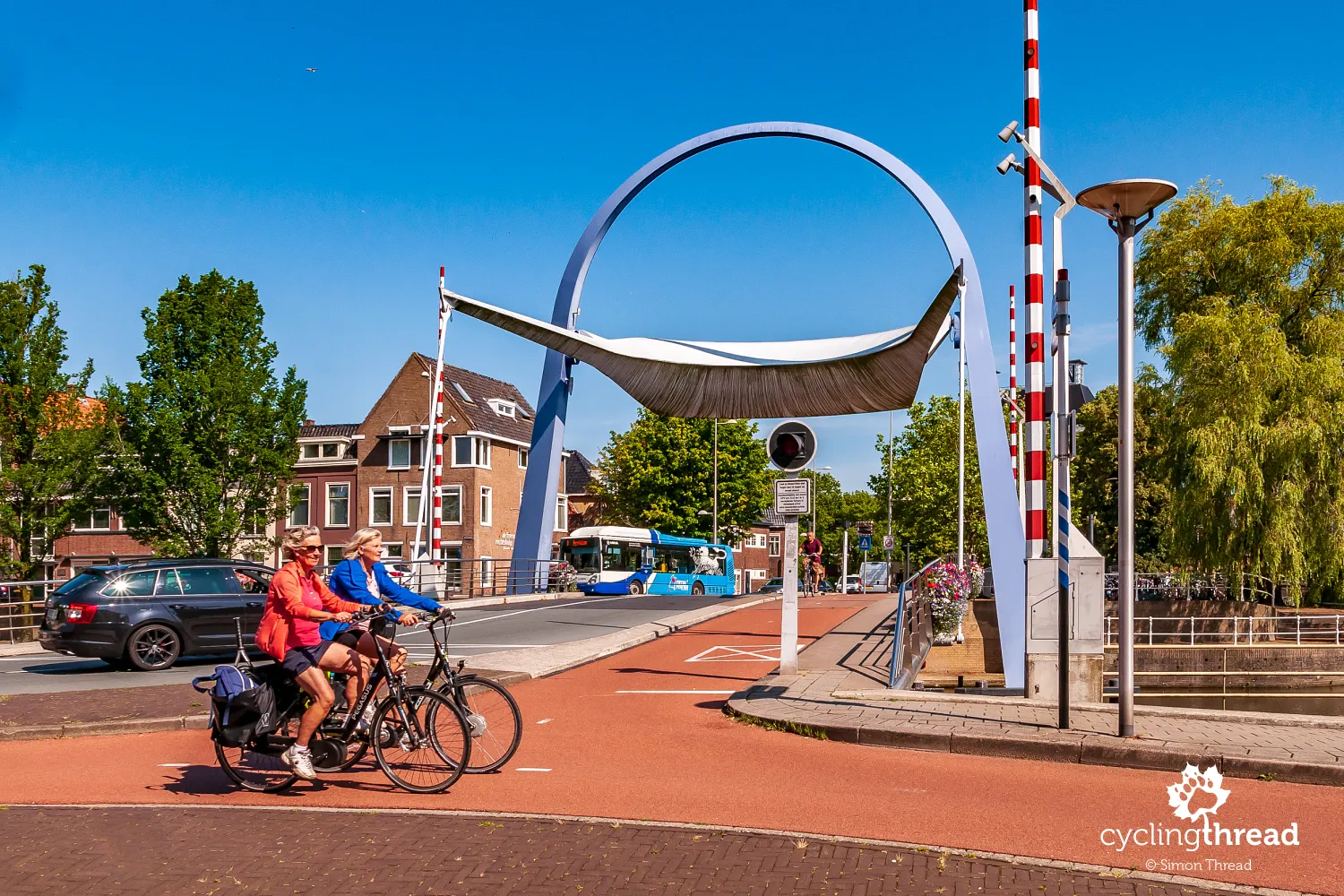
Start with the Frisian Museum in Leeuwarden
A great place to begin your stay in Friesland is the Frisian Museum in Leeuwarden. Founded in 1827, today it resides in a modern building in the city center, opened in 2013. The main exhibit, "The History of Friesland," tells the story of Friesland and its people. Visitors will learn about a small, proud nation that found its survival in maritime transport and trade on the challenging coastal terrain. The Frisians have always learned to live with water, which they openly describe as both an object of their love and... their disdain. The distinctive Frisian flag with red lily leaves (not hearts) will be seen proudly flying in the wind at many Frisian homes.
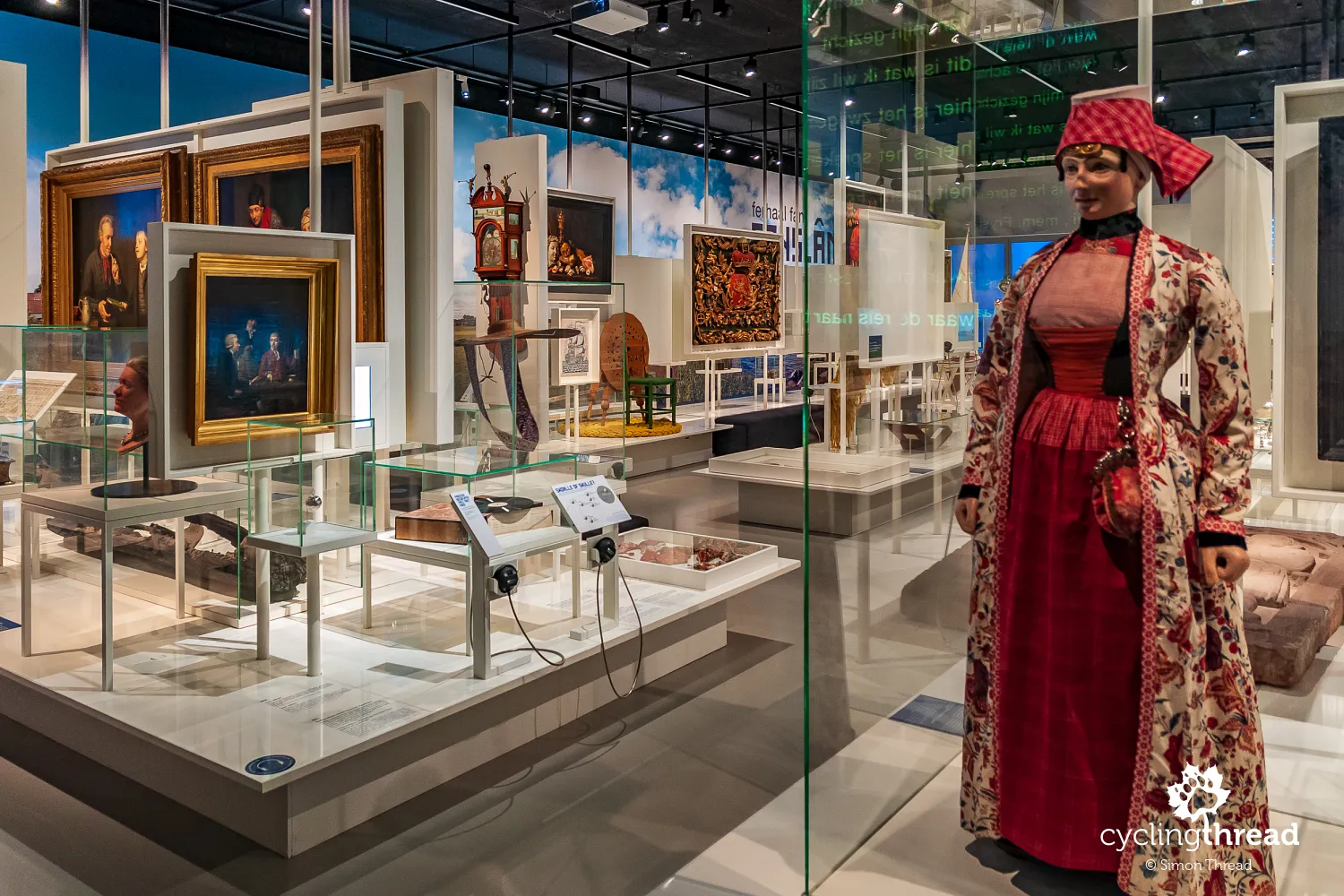
Oldehove - the Frisian Leaning Tower
In the cityscape of Leeuwarden, one cannot miss the city's symbol - the leaning Oldehove tower. Its current appearance isn't the result of any wars, as one might first think. Due to the soggy ground, the tower began to tilt shortly after its construction in 1529, and by 1533, the church's construction was halted, and its built part was dismantled. However, the tower itself was left standing, and so it has for nearly 500 years, tilted over 2 meters! It's worth noting that the builders and residents aimed to construct a tower taller than the Martinitoren in neighboring, and at that time, rival Groningen. Today, you can climb up the Oldehove via 183 steps or... take an elevator to view the capital of Friesland from above.
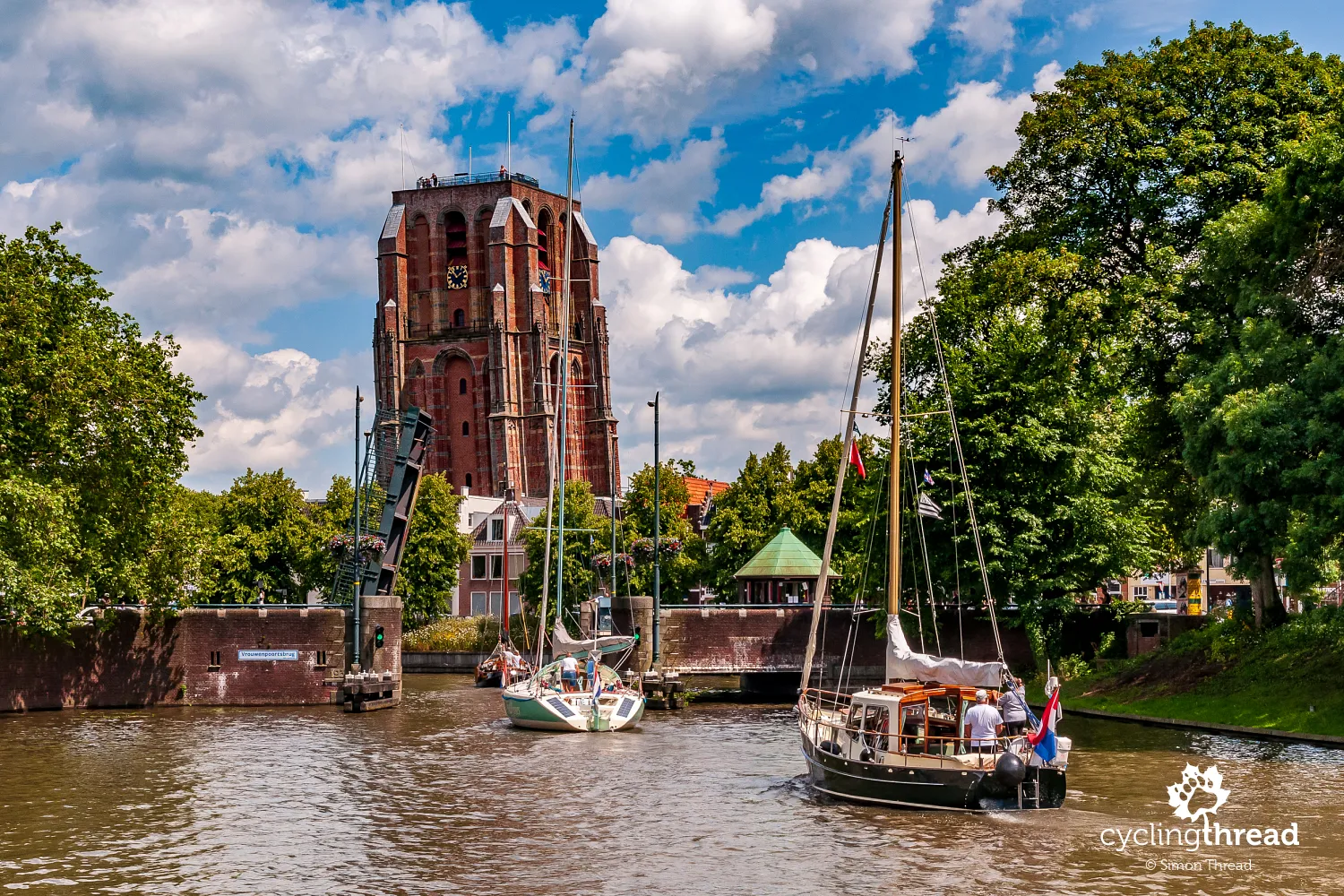
The Netherlands - even bike traffic jams here
From atop the Oldehove tower, we observed an unusual (for us) scene below. A several-dozen-person bike jam had formed in front of a bridge being raised. How very Dutch - a bicycle jam created because of a bridge lifted for a dozen boats and yachts sailing one of the thousands of Dutch canals. Over the following days, we encountered several more instances of bridges being raised for various types of watercraft. It was easy to see that water traffic is also highly significant here and not solely for tourists. Even in winter, when the canals freeze over, they become venues for several winter sports.
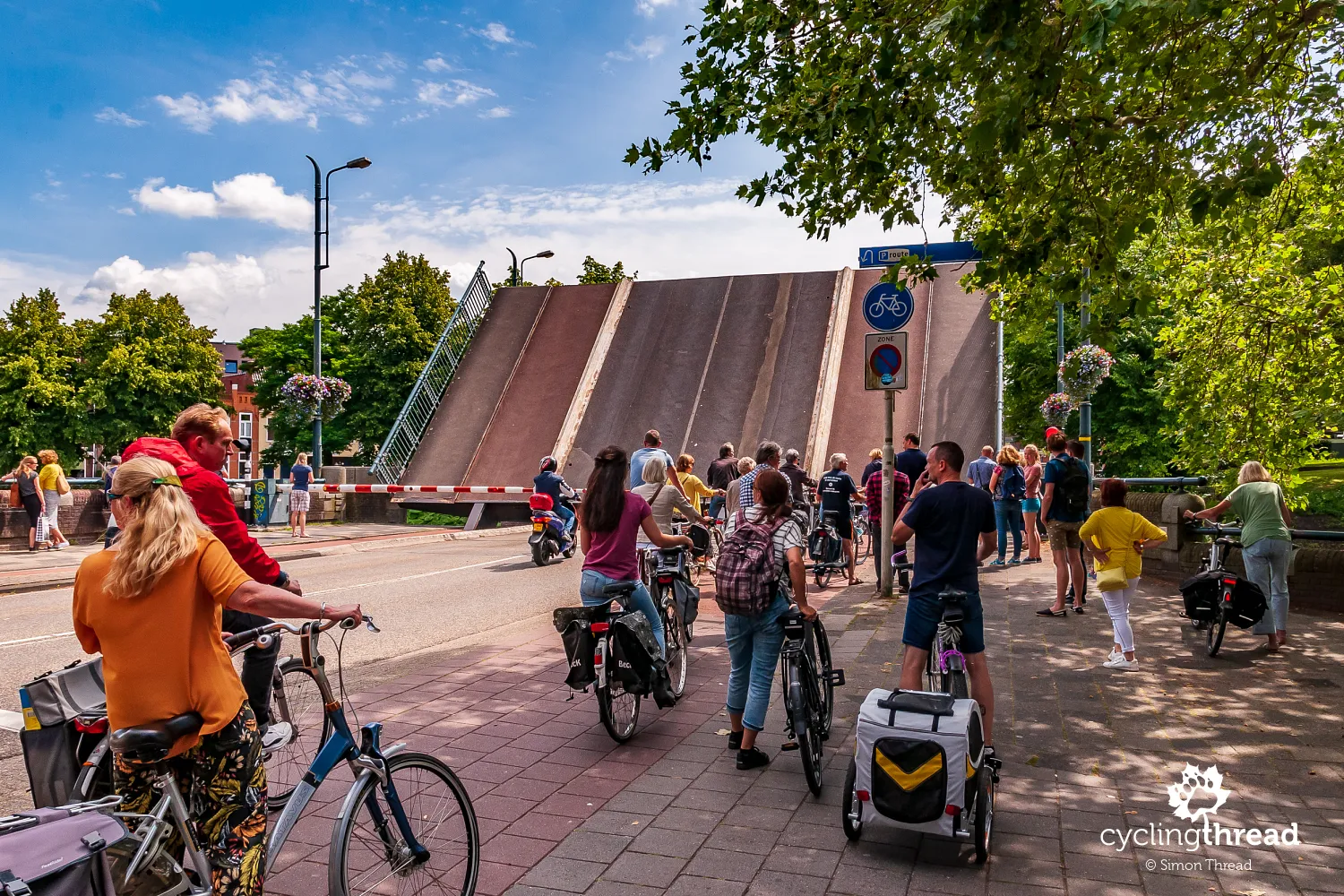
The National Porcelain Museum is a must-see
The National Porcelain Museum, housed in the 18th-century palace of Princess Maria Louise of Hesse-Kassel in Leeuwarden, particularly interested us since part of our kitchen decor consists of old Dutch tiles. Unfortunately, the exhibition showcasing the most characteristic, traditional face of Dutch porcelain was closed the day before our arrival. So, we had to make do with other impressive collections - the largest collections of Chinese porcelain in the Netherlands and collections of art nouveau and art déco porcelain. However, we did find one room arranged in the old style and using traditional Dutch patterns we had so hoped to see. Beautiful!
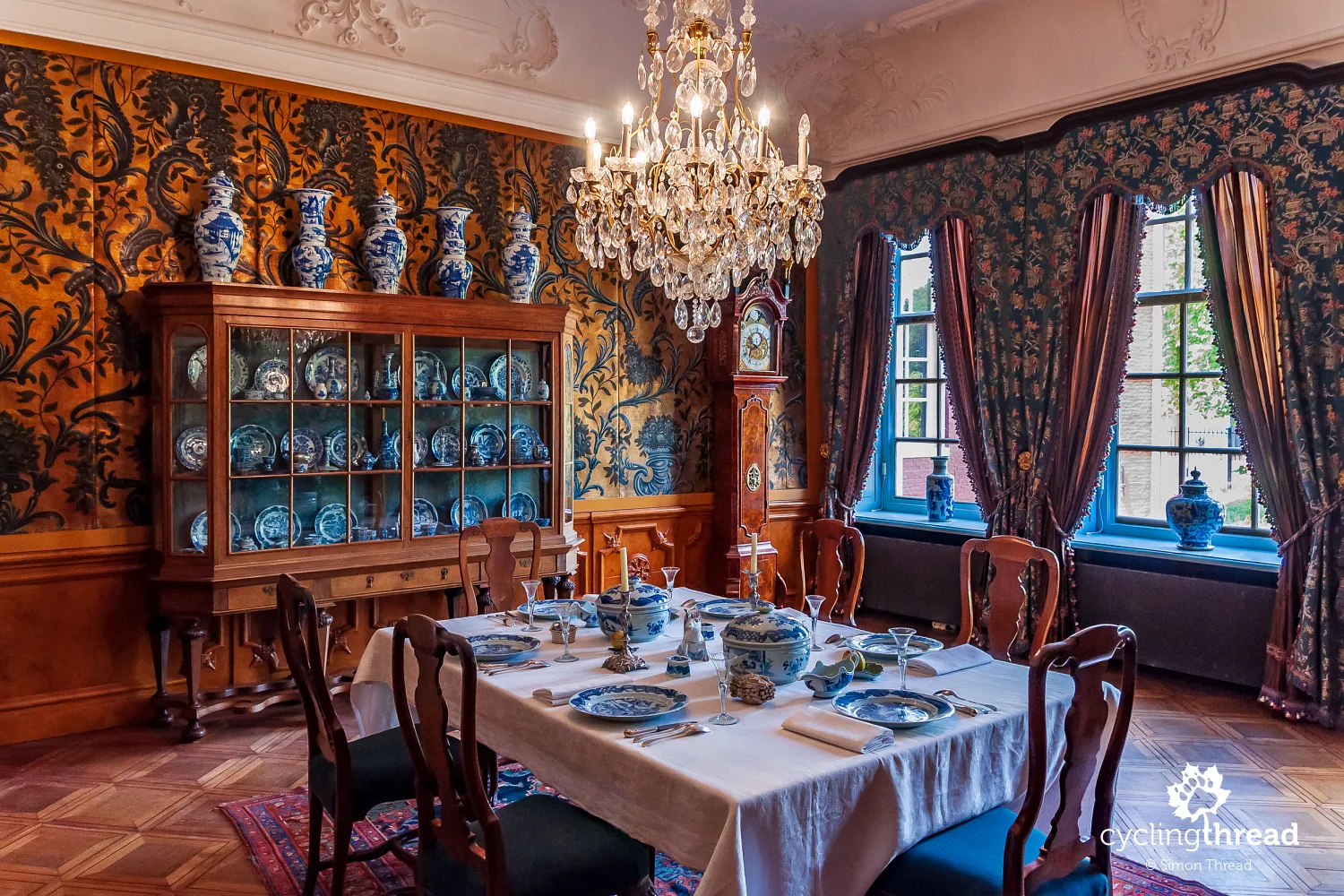
Friendly Northern Netherlands
Before arriving at the Wadden Sea, we expected to take more impressions from Groningen, which seemed more attractive to us than Leeuwarden. Yet, it was in the capital of Friesland - Leeuwarden - where we left a little piece of our expeditionary heart. Narrow streets along canals, public spaces decorated with regional colors, an immensely pleasant historic city center around the historic city weigh house, and a friendly waiter in a small restaurant who quickly introduced us to the basics of everyday Dutch eating - the start of our short journey through the north of the Netherlands was exceptionally successful, and this friendly, warm atmosphere stayed with us to the end.
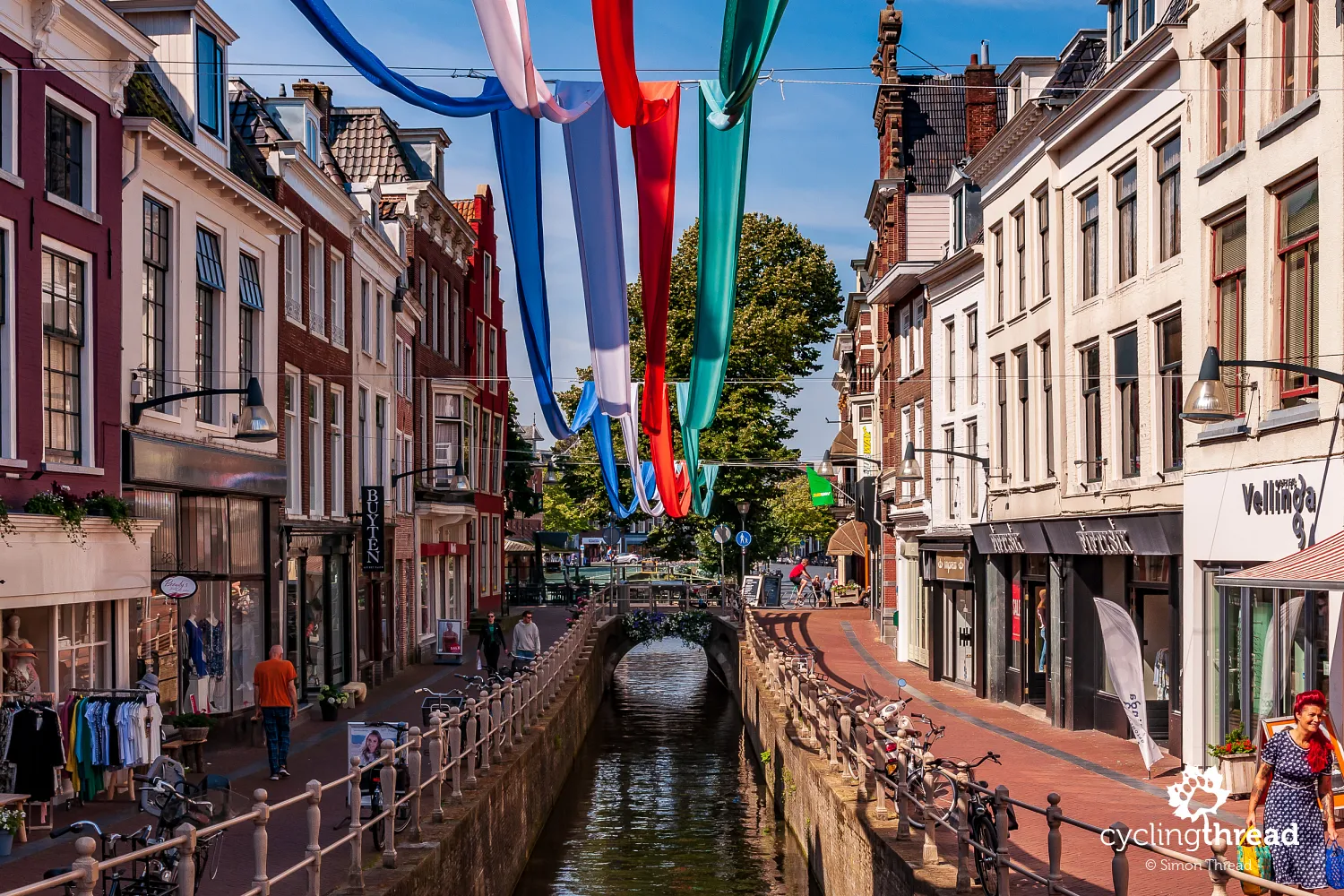
An extraordinary structure - the Mata Hari aqueduct
Leaving Leeuwarden on a great two-way cycling path for our several-day "almost loop" through historic Friesland, I didn't suspect how often we'd be wide-eyed with surprise. Another such occasion was cycling under the main water channel of western Friesland, connecting Leeuwarden with Harlingen. Yes - water transport in the Netherlands is such an important part of the economy that instead of bridges, the Dutch build aqueducts on major water routes to not disrupt the freedom of navigation for larger vessels or yachts with tall masts. Moreover, it turns out that Margaretha Zelle, for whom the aqueduct is named, is the famous Mata Hari, born right in Leeuwarden!
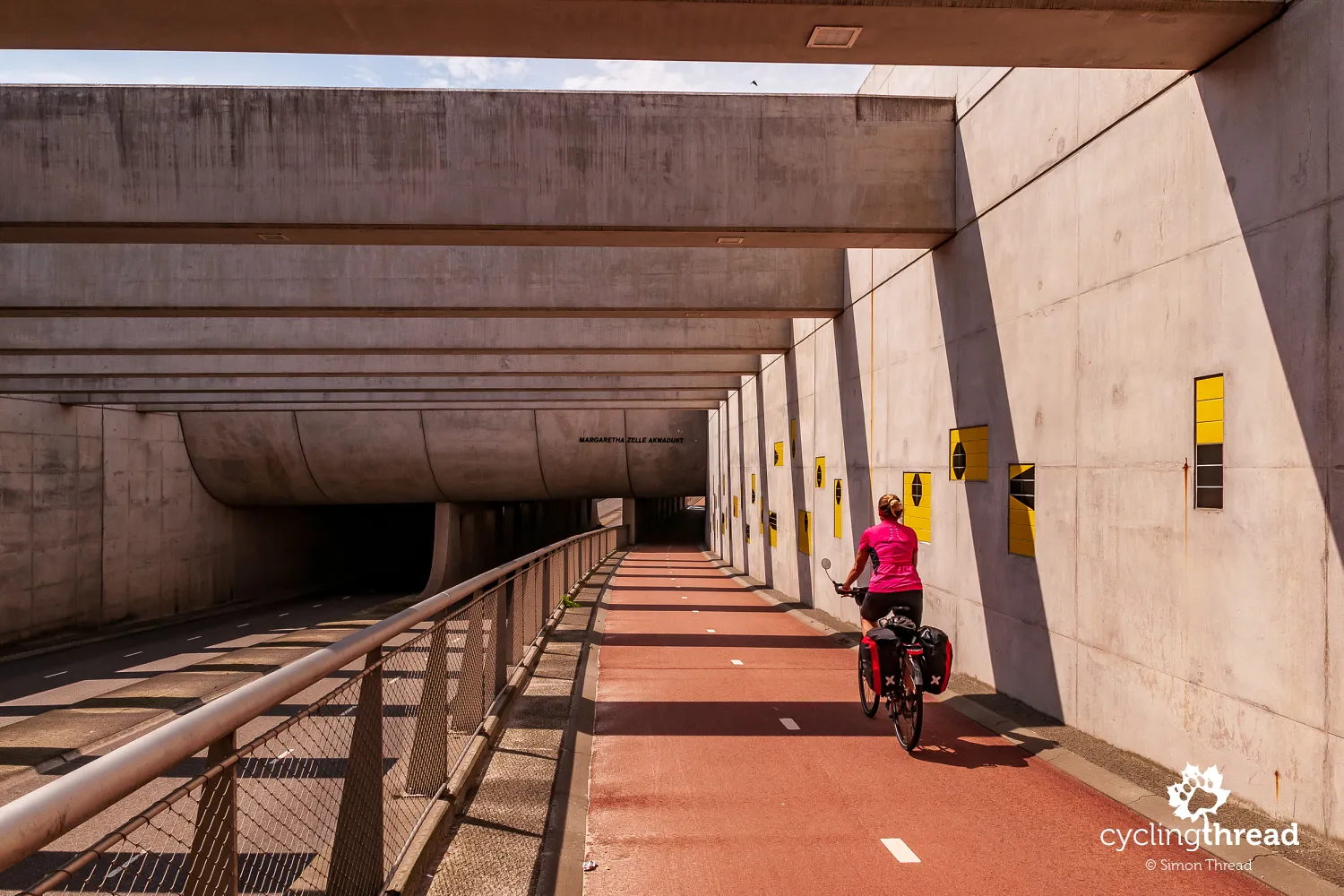
Free replacement ferry for cyclists
We soon discovered that special care for Dutch cyclists extends beyond the city limits. As we began to worry about the road bridge over the canal connecting Leeuwarden to the North Sea, which was under renovation on our route to Harlingen, we spotted signs directing cyclists to a detour. Within minutes, we were on a small replacement ferry, provided free of charge by the company renovating the bridge. The convenience of residents, for whom cycling is often the primary mode of transport, truly means a lot here.
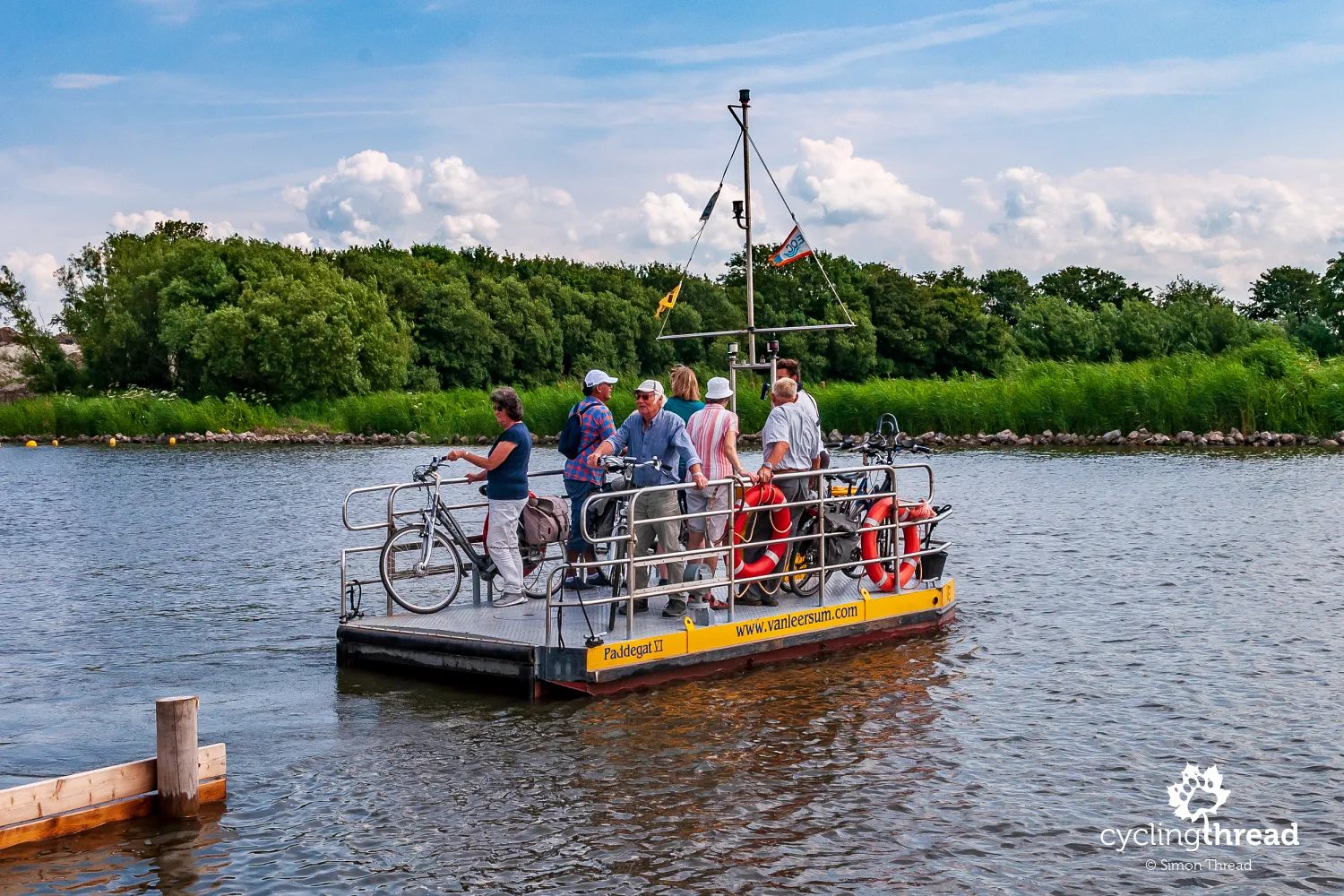
The oldest planetarium in Europe in Franeker
During a brief stop in Franeker, we visited the oldest operating planetarium in Europe. If you come here expecting a classic facility of this type, you'll be in for quite a surprise. The planetarium was built by a local sheep farmer and is still located in the room of a regular tenement house where the builder lived with his wife and children. Entertaining the children was the main motivation for the author. The movement of the planets hung on wires was controlled by a complex mechanism built above the blue-painted ceiling. The planetarium is located right across from the beautiful, towering town hall in Franeker.
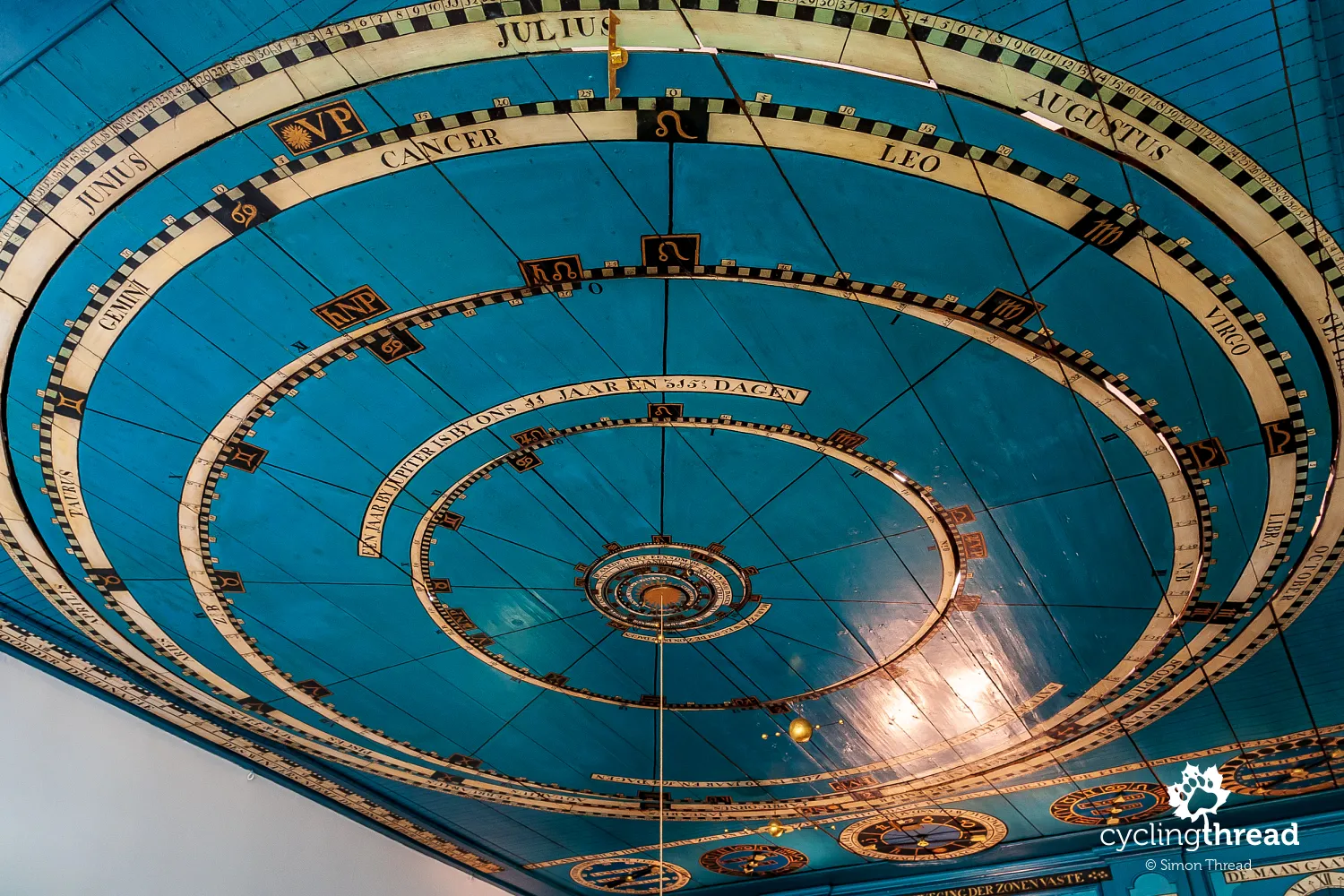
The node system of cycling routes in the Netherlands
By the time we reached Harlingen, we had mastered the Dutch system of navigating cycling routes. The node system (also known as the junction system) involves marking intersections and landmarks with numbers, which then define the route of the trip. A list of node numbers is automatically prepared by apps and websites based on the data of the start and end of the planned trip. For some, this list will be a great convenience, while for others, like us, perhaps... too much of a simplification. We, who came to the Netherlands to explore new areas, missed the naming of places we visited in this navigation system, which in this system turn into a sequence of meaningless numbers. Even if we were not able to pronounce most of those names... ;-)
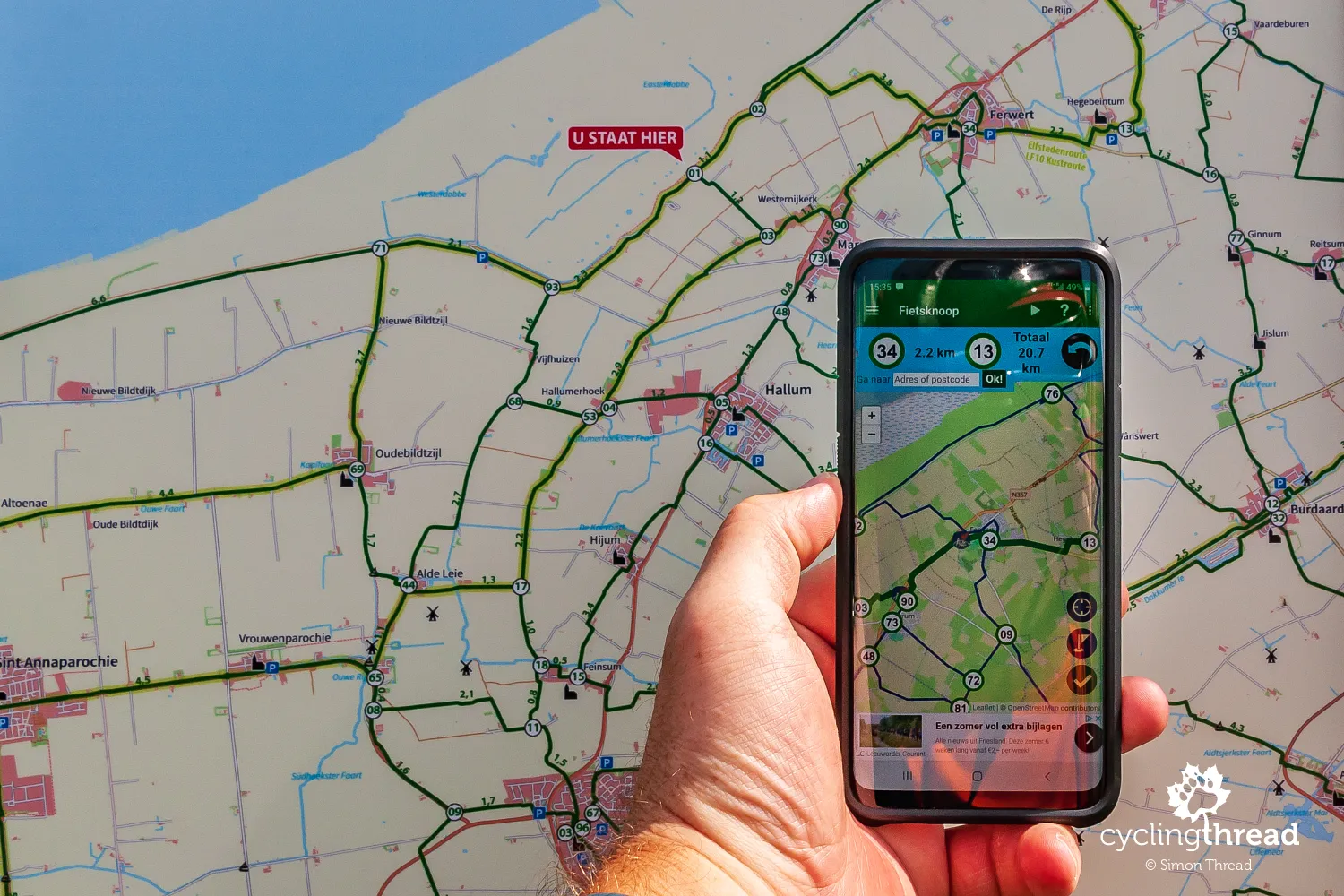
In the old port of Dutch whalers
In Harlingen, the former port of Dutch whalers, we took a day off. Hundreds of leisure yachts and fishing boats were moored in the city's canals surrounding the port town center. Those who make a living from the sea, as well as those for whom water is just a place of relaxation, headed out to sea - it was not uncommon for baskets full of shrimp to land on the quay next to the suitcases of elegant vacationers. The original rotating bridge under the round building of the port captain's office let everyone out into the Wadden Sea and beyond into the North Sea. Opposite it stands a small, distinctive building of the former courthouse, now a restaurant recognized by the Michelin Guide. The times of the whalers are recalled by a sperm whale monument - a huge statue that spouts a water fountain every few minutes. Perhaps it's a symbolic sign that the sperm whales have outlasted the Dutch hunt?
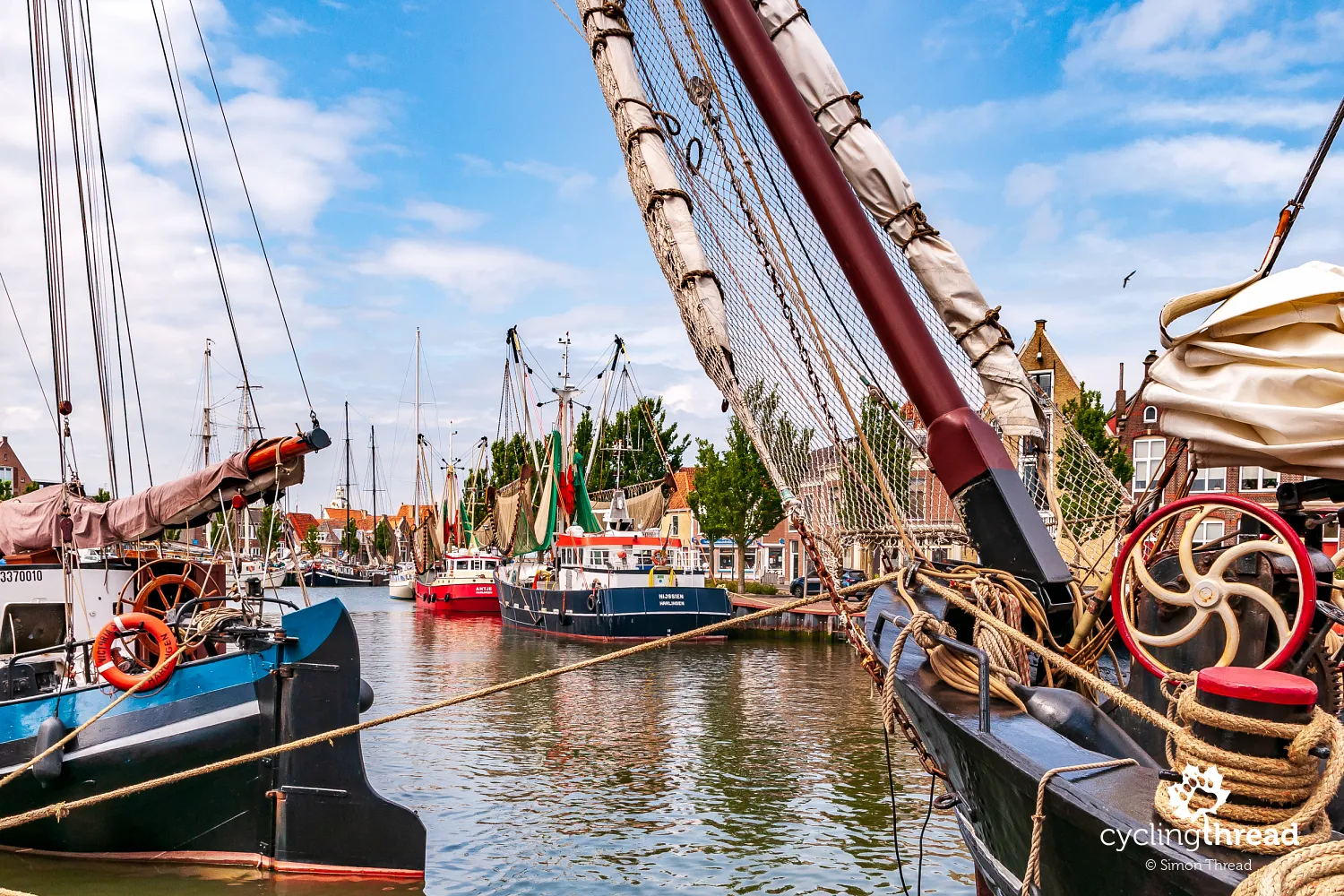
Willem Barents was from Friesland
In the 17th century, whaling reportedly became the basic industry of the Dutch economy, and a Dutch settlement was even established on Spitsbergen for this purpose. After World War II, a special processing ship named after Willem Barents participated in whale hunting. This famous explorer discovered the Barents Sea and the Barents Islands, named after him. He devoted his life to finding the so-called Northern Route, which would allow for faster sea transport of goods from Europe to Asia. Willem Barents holds a special place for the Frisians, as he was born on Terschelling - one of the West Frisian Islands, neighboring "our" Ameland. He died during the return from his third expedition, and a replica of the ship on which Barents discovered new lands is being built in Harlingen.
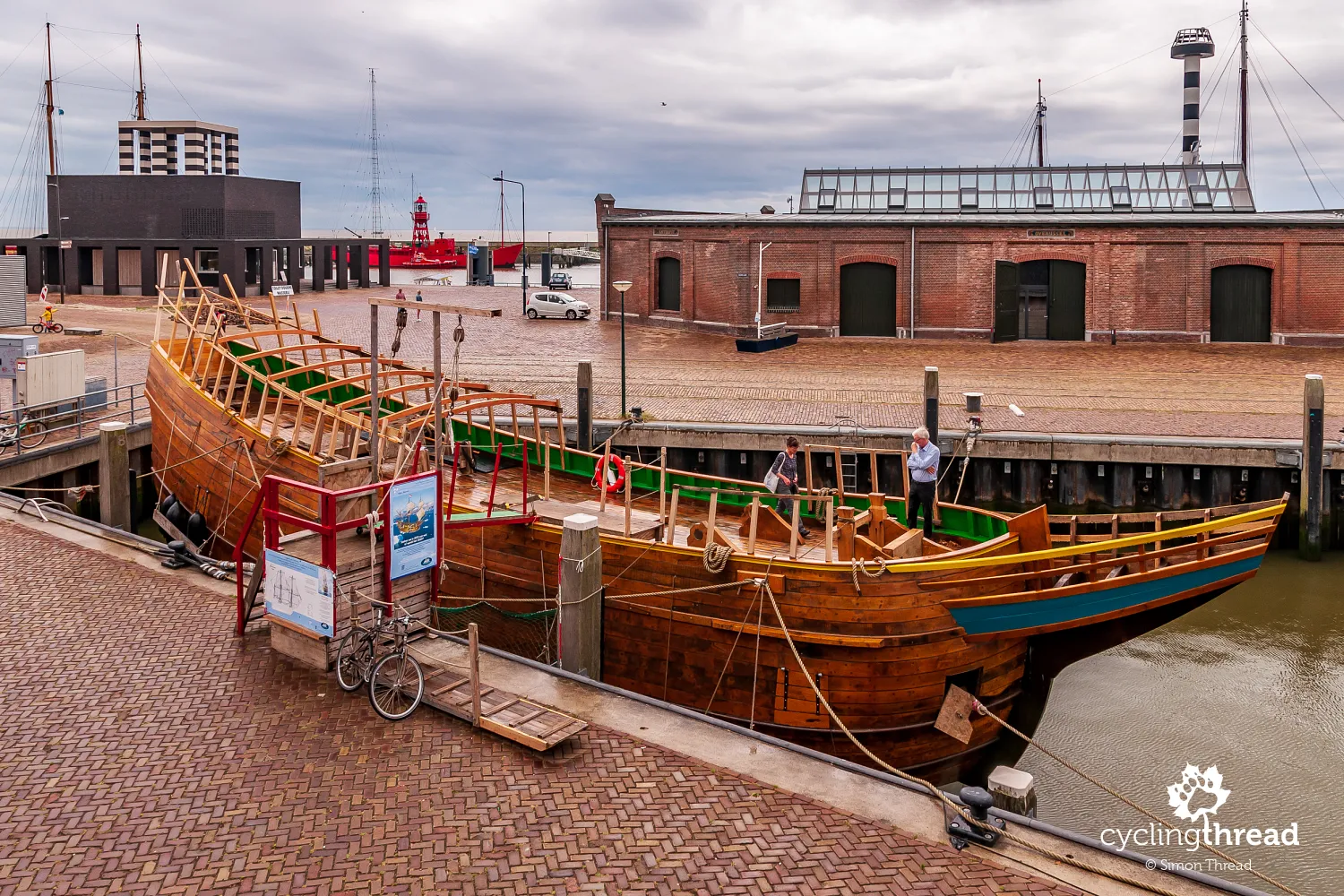
On the EuroVelo 12 route along the North Sea
After returning from Ameland, our route from Holwerd took us along the seaside flood defense dikes. These massive structures, which separate the Netherlands from the sea, have been systematically renovated over the last few years to heighten and strengthen them due to the anticipated rise in ocean levels caused by climate change. One of the EuroVelo network routes - number 12 along the North Sea - runs here, using a very popular long-distance cycling route around the Netherlands for some of its journey. The landscape is a stark contrast to Ameland. Beyond the dike, it's flat as far as the eye can see - as typical of the Netherlands. The scenery is punctuated by isolated farms, atmospheric old fishing villages, and… herds of omnipresent sheep.
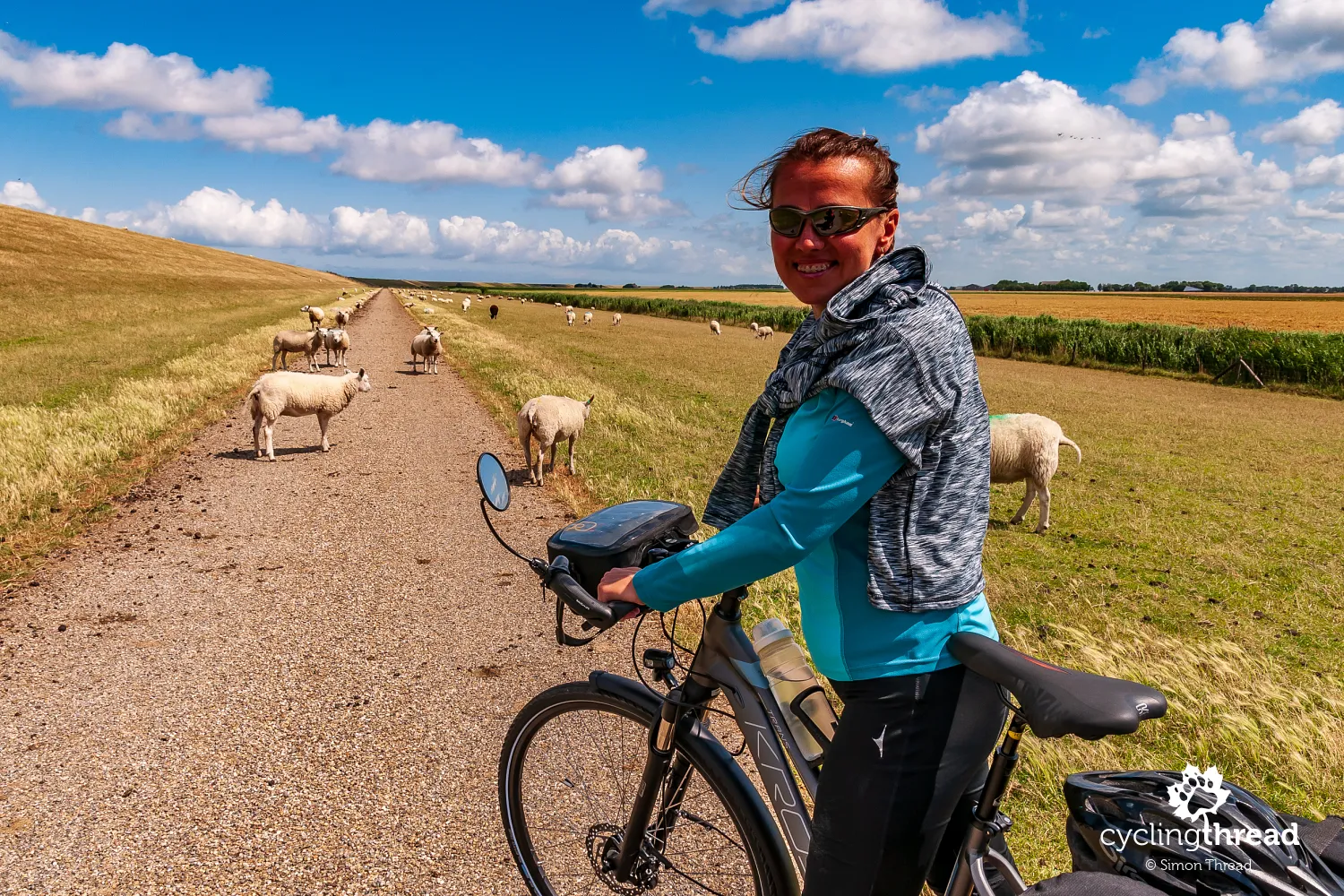
Our time in Friesland coincided with a period of record-breaking heat in the Netherlands and northern Germany, and even the sheep's behavior was indicative of the scale of the phenomenon. Constantly exposed to the sun, the animals sought shade even in their own shadows. They utilized every minor structure, even an information board along the route, to hide at least their heads in its shade. However, due to the lack of many such places, most simply lay somewhere near the trail, and often on the cycling path itself, seemingly indifferent to the cyclists maneuvering around them.
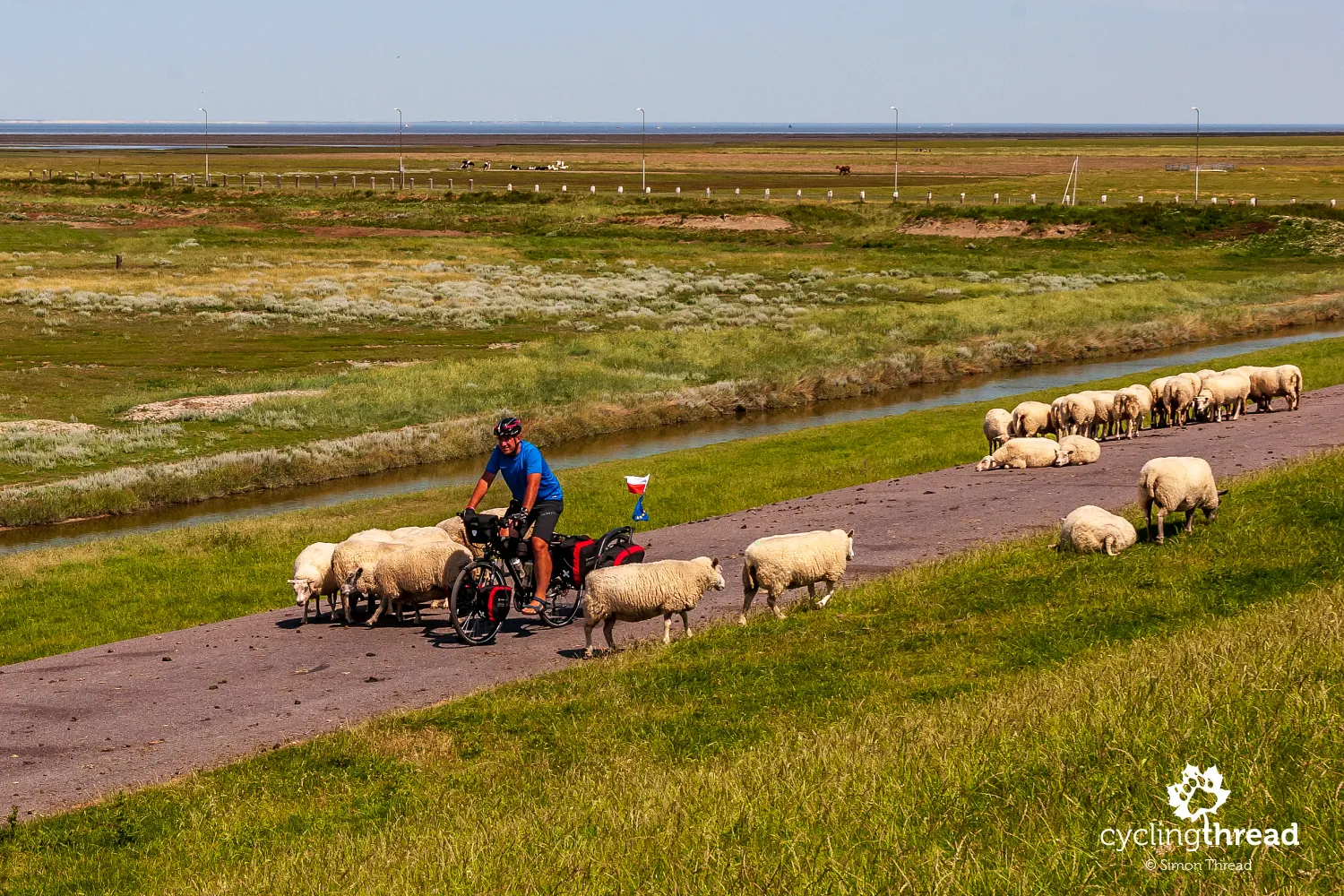
The Sense of Place of Frisian artists
One place where sheep found refuge from the scorching sun was under the shadow of the sculpture "Waiting for High Water," located on the flood defense dike near the ferry harbor close to Holwerd. The five-meter statue by Jan Ketelaar faces the sea in an open pose symbolizing a sense of balance and reconciliation with the sea. Two months after our visit to Friesland, another statue was placed next to it. These sculptures are part of the "Sense of Place" project, which has already resulted in the creation of other works of art or artistic installations on the Wadden Sea coast. They aim to build both local community and tourists' natural and cultural awareness related to the Wadden Sea.
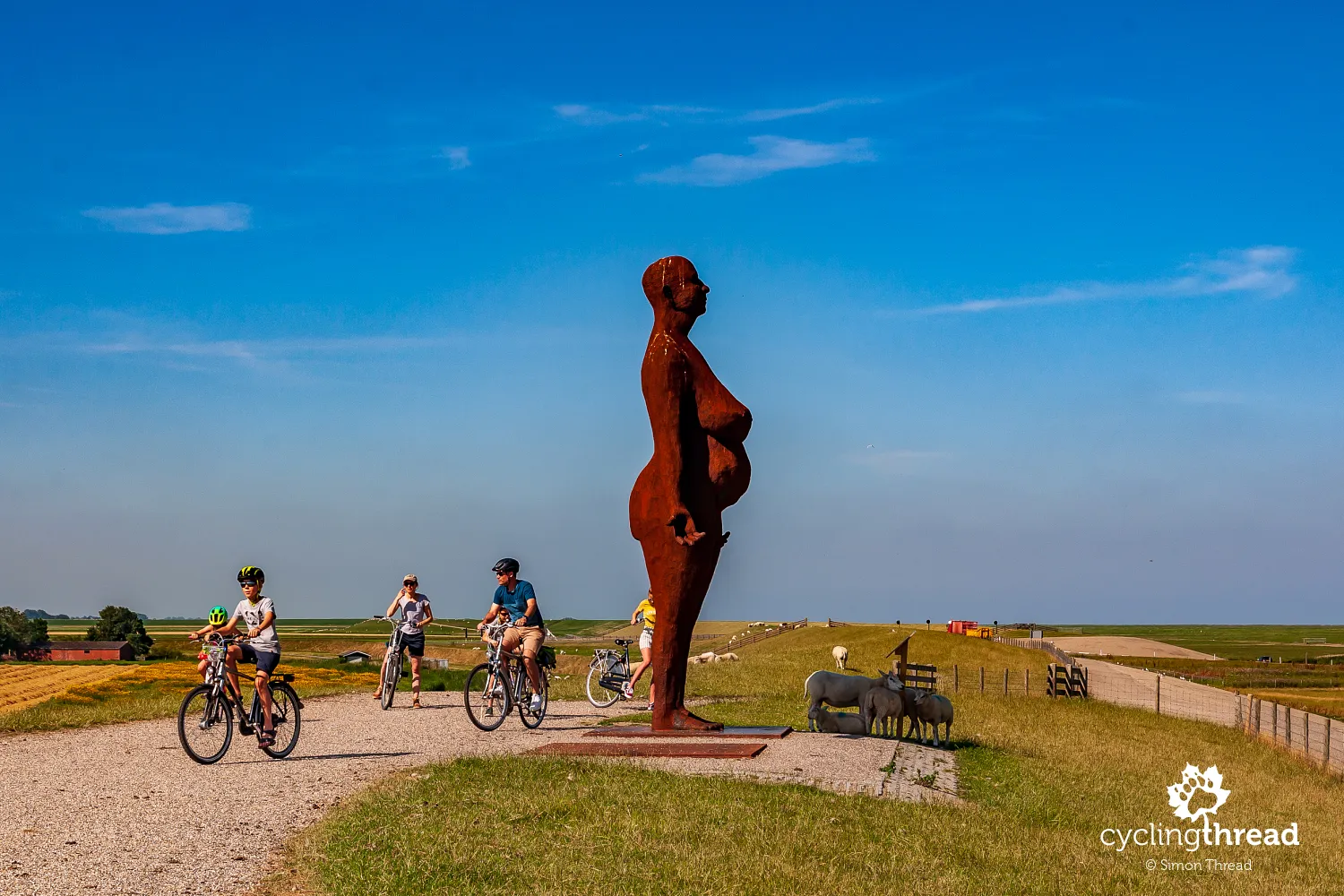
The highest terp in the Netherlands - Hegebeintum
To protect themselves from the destructive action of water, Friesland's inhabitants built their homes and villages on small hills called terps as early as 500 BCE. These were made of earth, clay, as well as manure and waste from their farms. Today, mainly those terps on which a church was built have survived, while others have been dismantled over the years and used as... fertilizer on the fields of poor farmers. The terp museum - Museum Wierdenland - is located in Ezinge near Groningen. And we stumbled upon the highest terp in the Netherlands, measuring just under 9 meters, in the small village of Hegebeintum. At its "summit" stands a small church built in 1130. The interior houses, among other things, a collection of beautiful epitaphs related to the inhabitants of the nearby Harsta State manor.
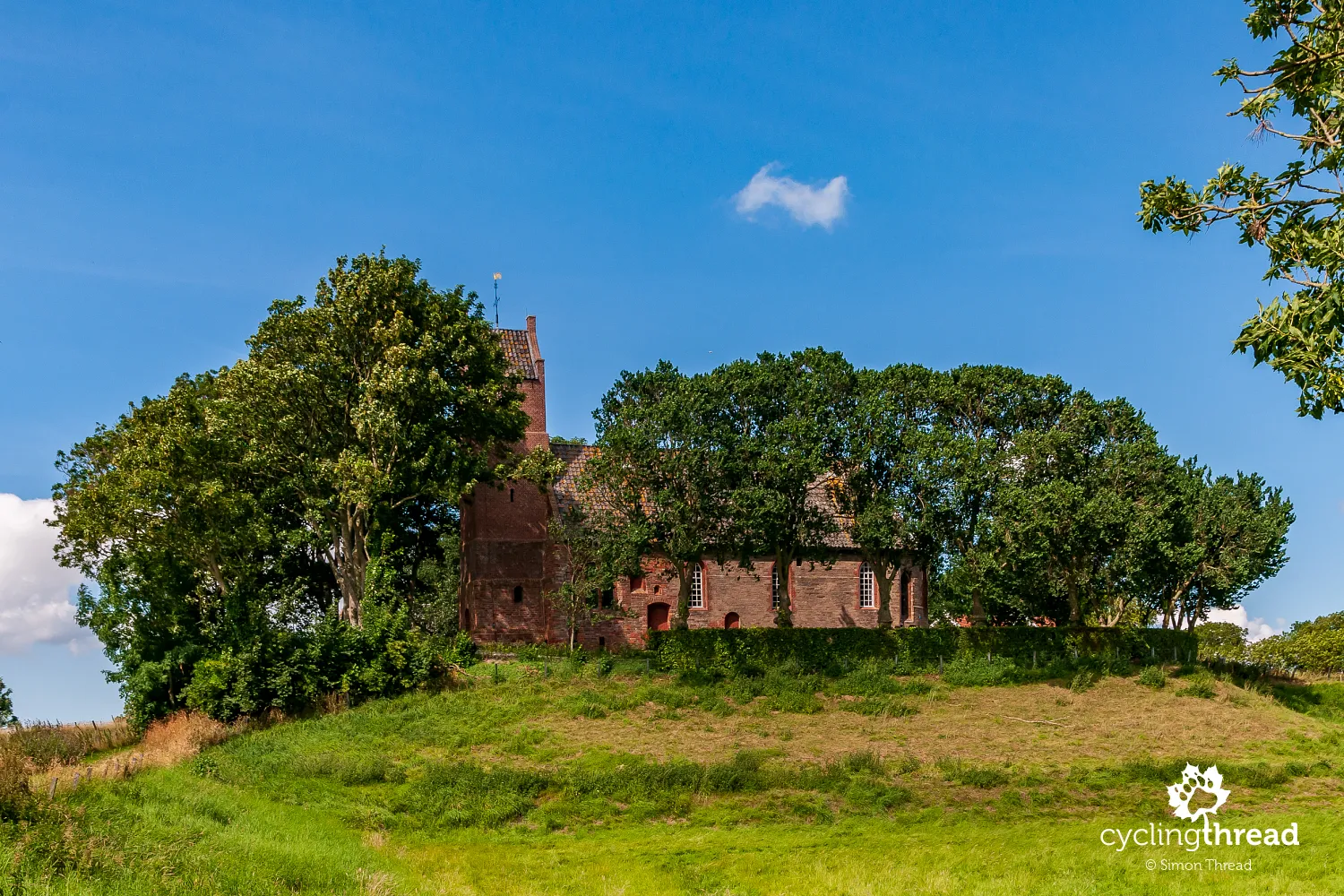
Wierum and Moddergat - former fishing settlements
Another Frisian village built on a terp, even before the formation of the current coastline of the Netherlands and the construction of flood defense dikes, is Wierum - a former fishing settlement with a characteristic small Evangelical church erected in the place of the first one destroyed by storms. The year 1893 is recorded in the village's history as a tragedy when, during a fishing trip, 13 out of 17 fishing boat crews from Wierum were lost in a sudden storm. A monument dedicated to the missing fishermen stands on the dike opposite the church. In the neighboring village of Moddergat, there is a quaint Fishing Museum with a preserved original Frisian fisherman's homestead.
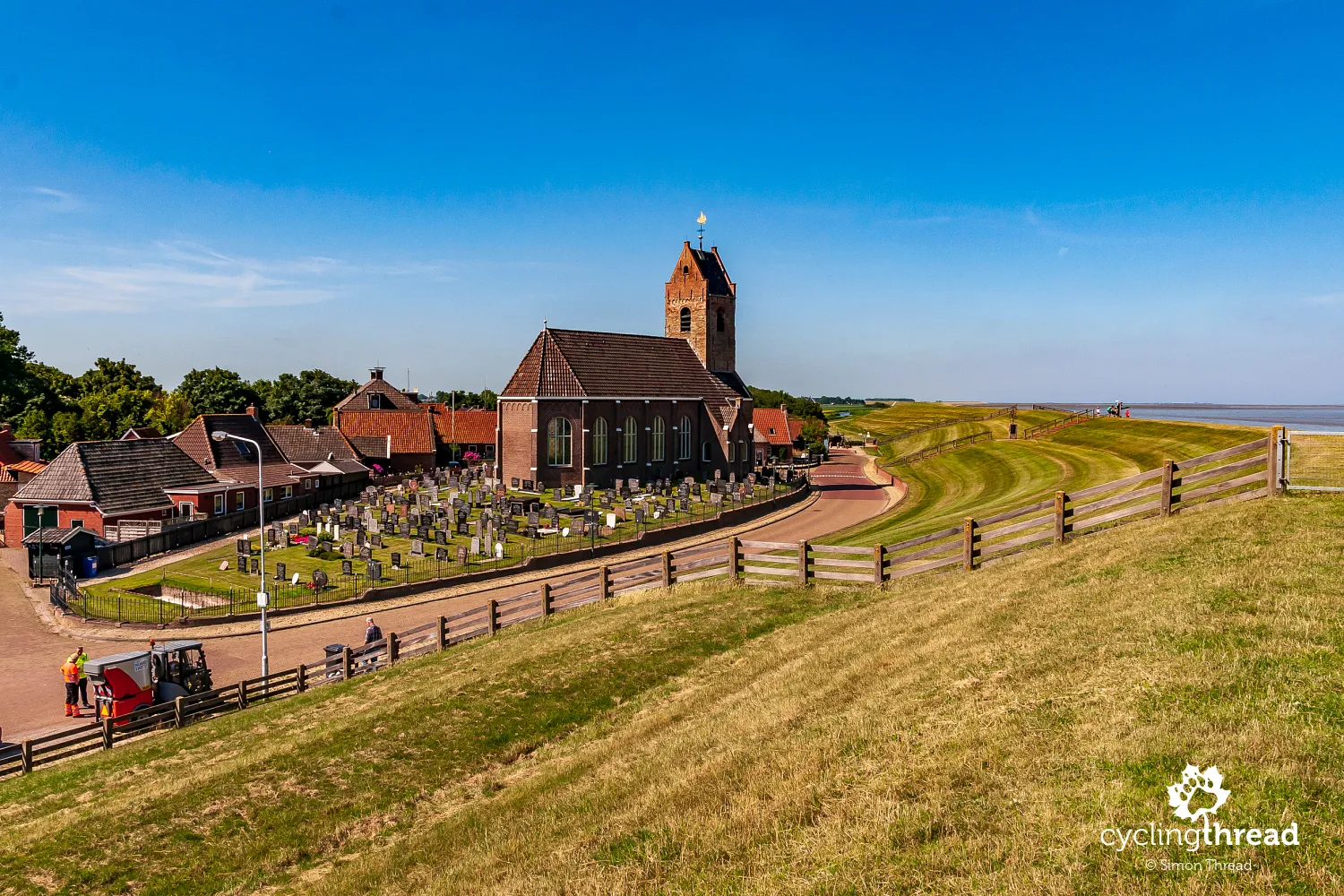
This is what a traditional Frisian farm looks like
Friesland is a bit like Low Beskids in Poland. If you know the feeling of spotting traditional "chyża" or Lemko huts in the landscape of the Low Beskids, which under one roof house a living area, a barn, a stable, and other utility rooms, you might feel similarly in Friesland, albeit entirely flat. Here, too, farms are distinguished by being connected in one continuous line of buildings, though rarely under one roof. The enormous Frisian barns differ from Lemko ones mainly in size and... the degree of care. Flowers, bushes, and trees grow around, leaving no doubt that everyone here is aware of the role aesthetics play in daily life.
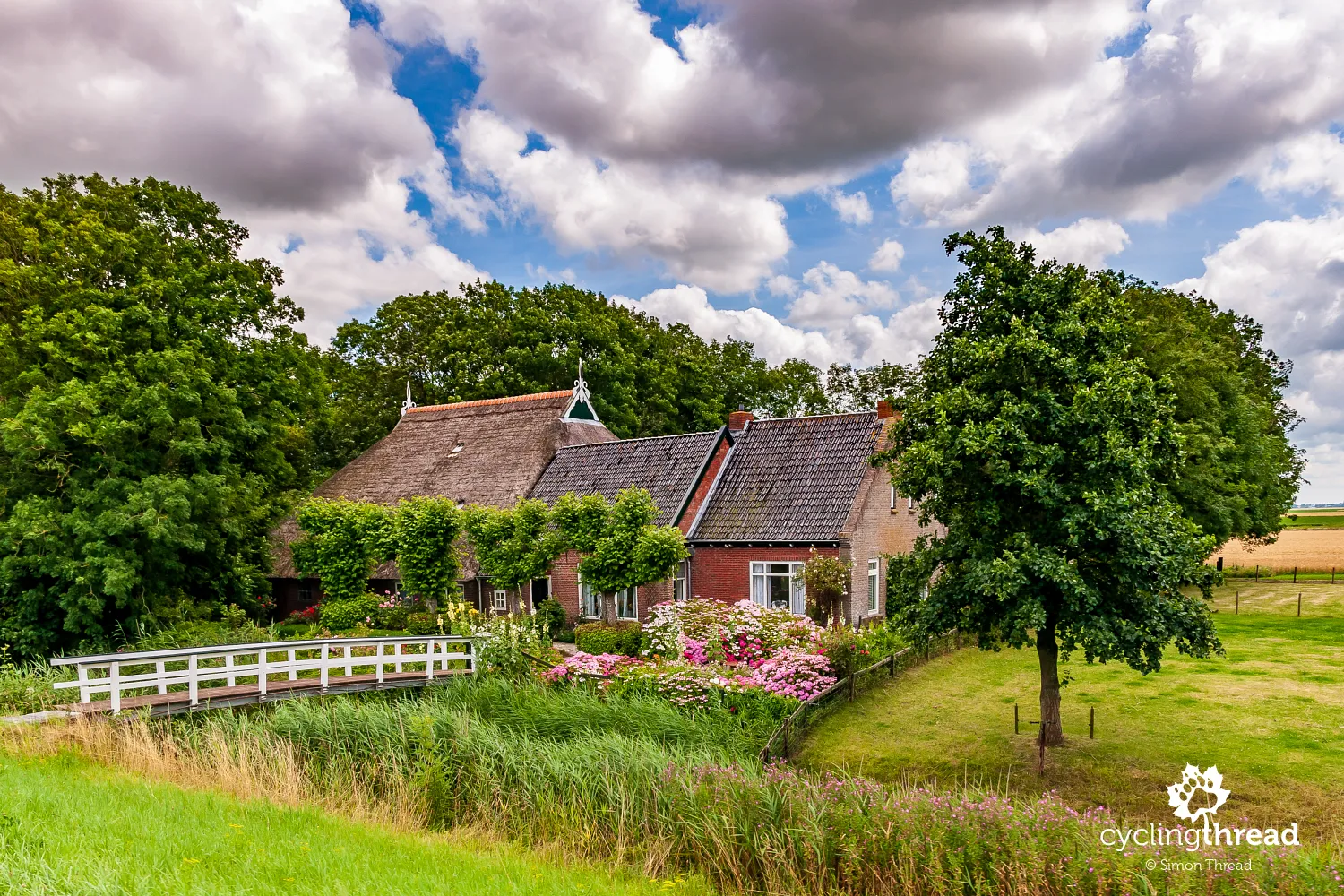
Rustpunt - a resting place for cyclists
Journeys along the Netherlands' cycling routes are accompanied by an extraordinary initiative, easily found in a mobile app for planning cycling routes. These are "rustpunten" - rest points for cyclists, run by private individuals along cycling routes. Each offers a comfortable place to eat a meal or shelter in the shade from the heat, and also - notably - even a refrigerator full of basic food and equipment for quickly preparing a simple meal. If you use the drinks or supplies in the refrigerator, you're expected to pay in the provided honesty box. The operation of these places is based on honesty and a wonderful trust in cycling tourists.
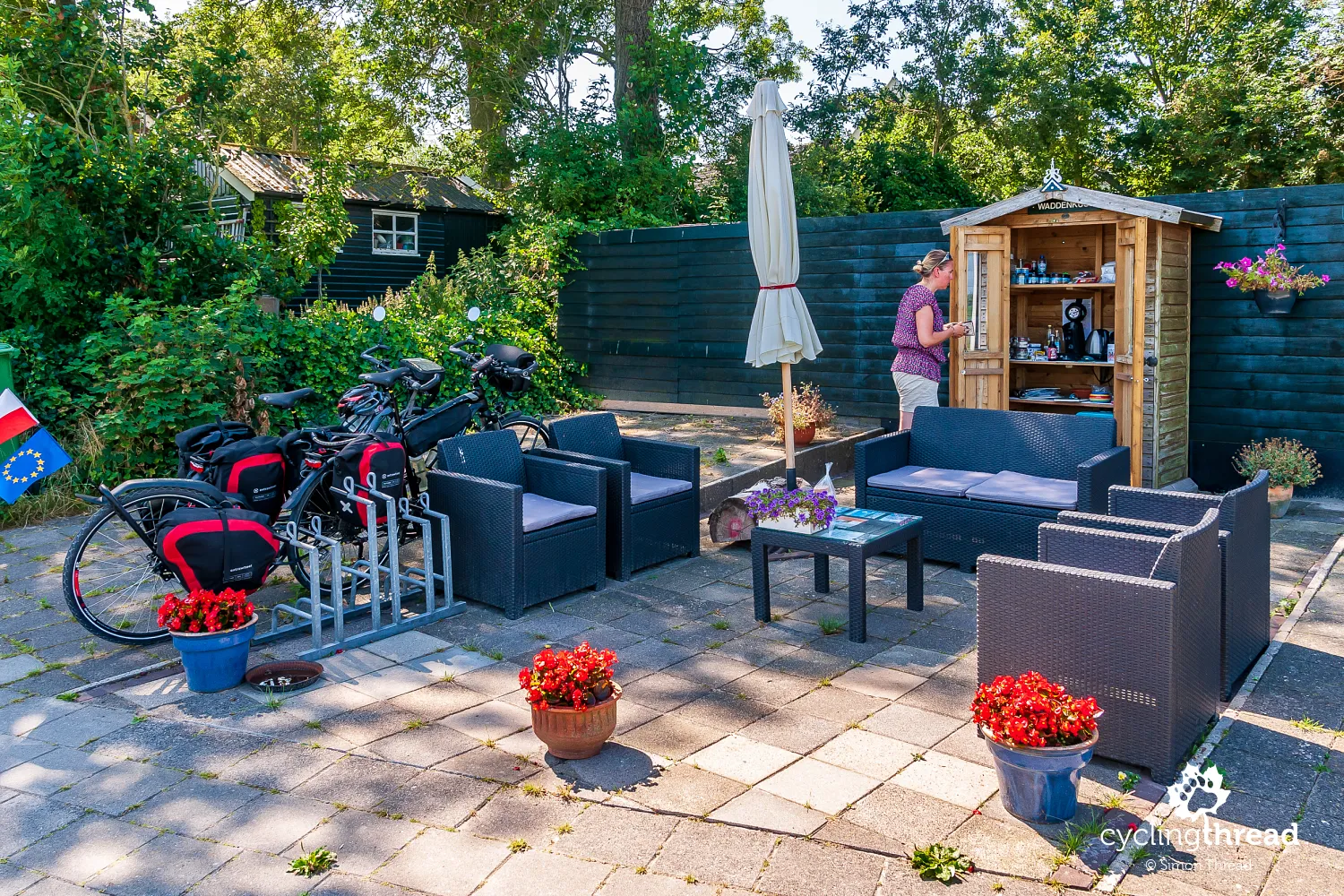
Huge sluices between Friesland and Groningen
The provinces of Friesland and Groningen are separated by the artificial Lauwersmeer lake, created by the construction of a huge sluice in Lauwersoog. It's over this sluice that we entered the Lauwersmeer National Park, and the route changed from being more scenic to more informative, meaning there were more places to see and visit. The Fishing Museum in Zoutkamp, the unique circular village of Niehove, or former settlements built on man-made hills like the one in Ezinge, which were meant to save them from floods. We quickly found out that seemingly monotonous Netherlands has a lot to offer the curious tourist. Among the attractions that the province of Groningen offers is also a boat trip through the Dutch canals, which can be done with a bicycle. We chose our overnight stay at the cozy camping Aduarderzijl to start the next day with a two-kilometer ferry trip.
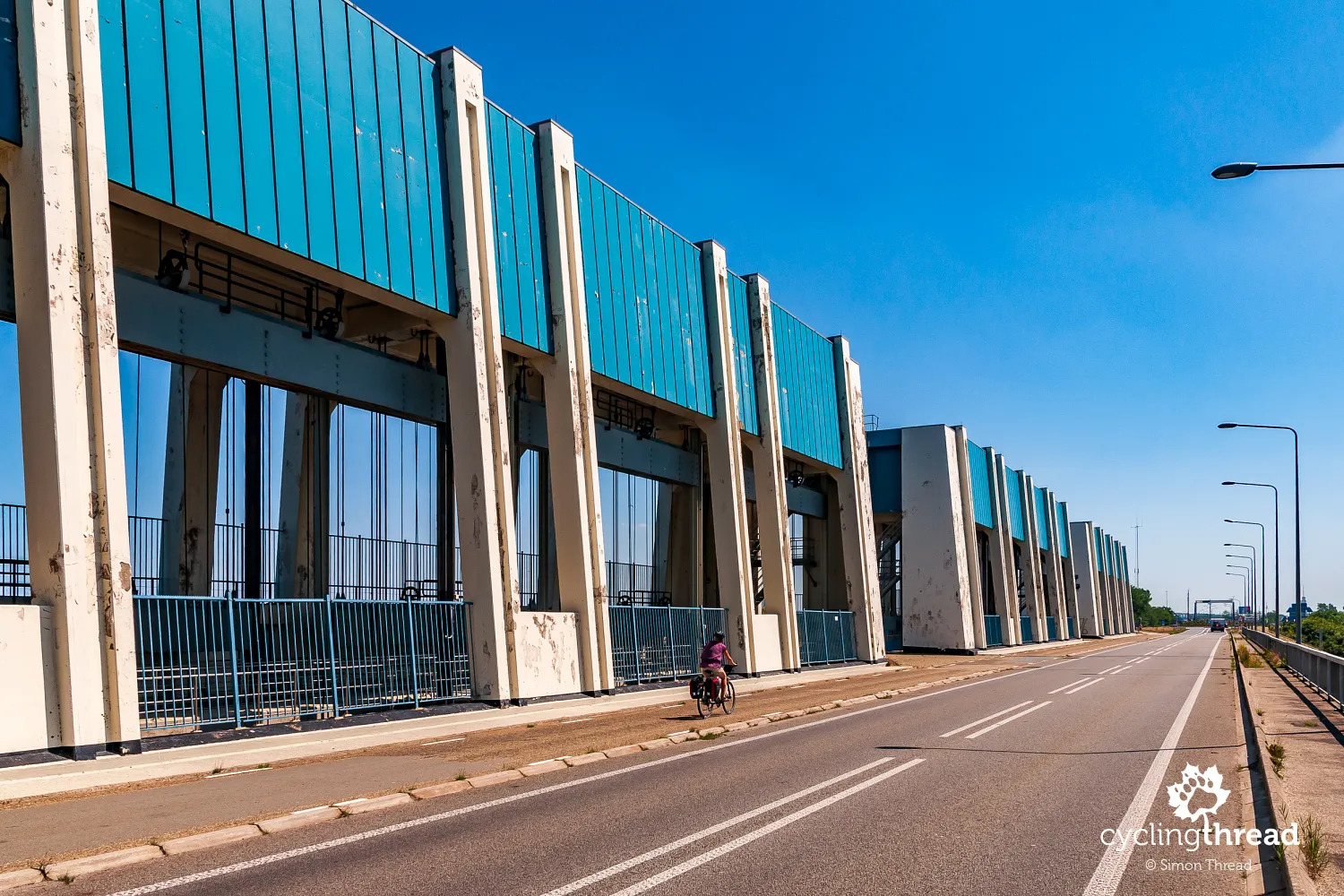
Polish konik horses in Lauwersmeer National Park
The artificial Lauwersmeer was created in 1969 to protect the inland areas of Friesland and the province of Groningen from floods, which have regularly devastated these areas for centuries. After the former Lauwerszee bay was closed off, a freshwater reservoir was created, attracting new species of fauna and flora. The newly created landscape and conditions for birds became so valuable that in 2003, the Lauwersmeer National Park was established on the east side of Lauwersmeer. It is home to over 100 species of birds, as well as Scottish Highland cattle and a herd of Polish konik horses, mainly brought in to prevent the park's areas from overgrowing.
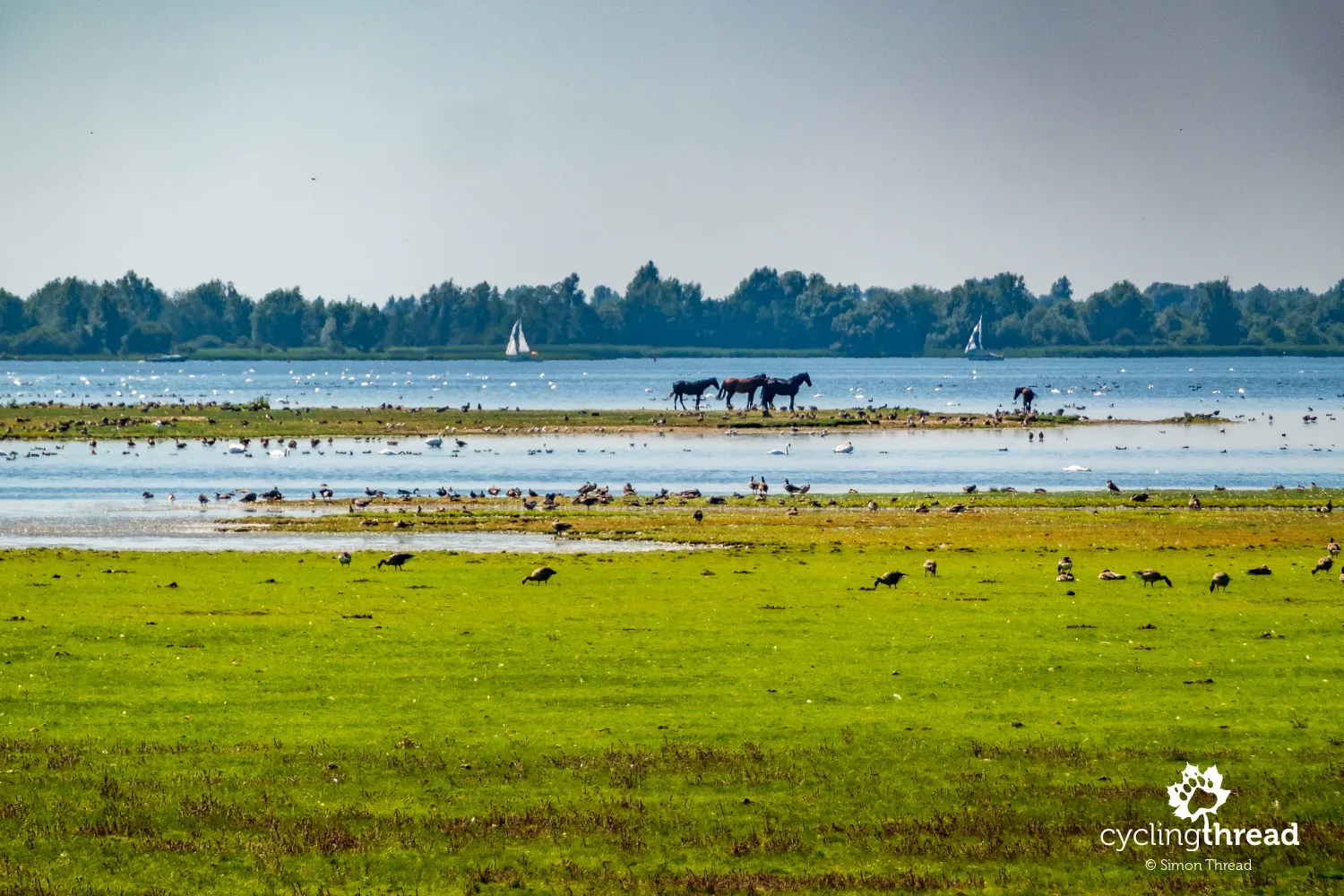
Fishing Museum in Zoutkamp
South of Lauwersmeer lies the small town of Zoutkamp. For centuries, the community lived off fishing and shrimp catching. Until 1969, when the sluices were built in Lauwersoog, cutting off its direct access to the sea against local protests. Changes in the landscape, the way the newly created water body and surrounding land areas were used, and later the establishment of Lauwersmeer National Park, led to the development of tourism services. The Fishing Museum is located on the quayside in the former port. Exceptionally rich in various exhibits, it is definitely a place worth visiting.
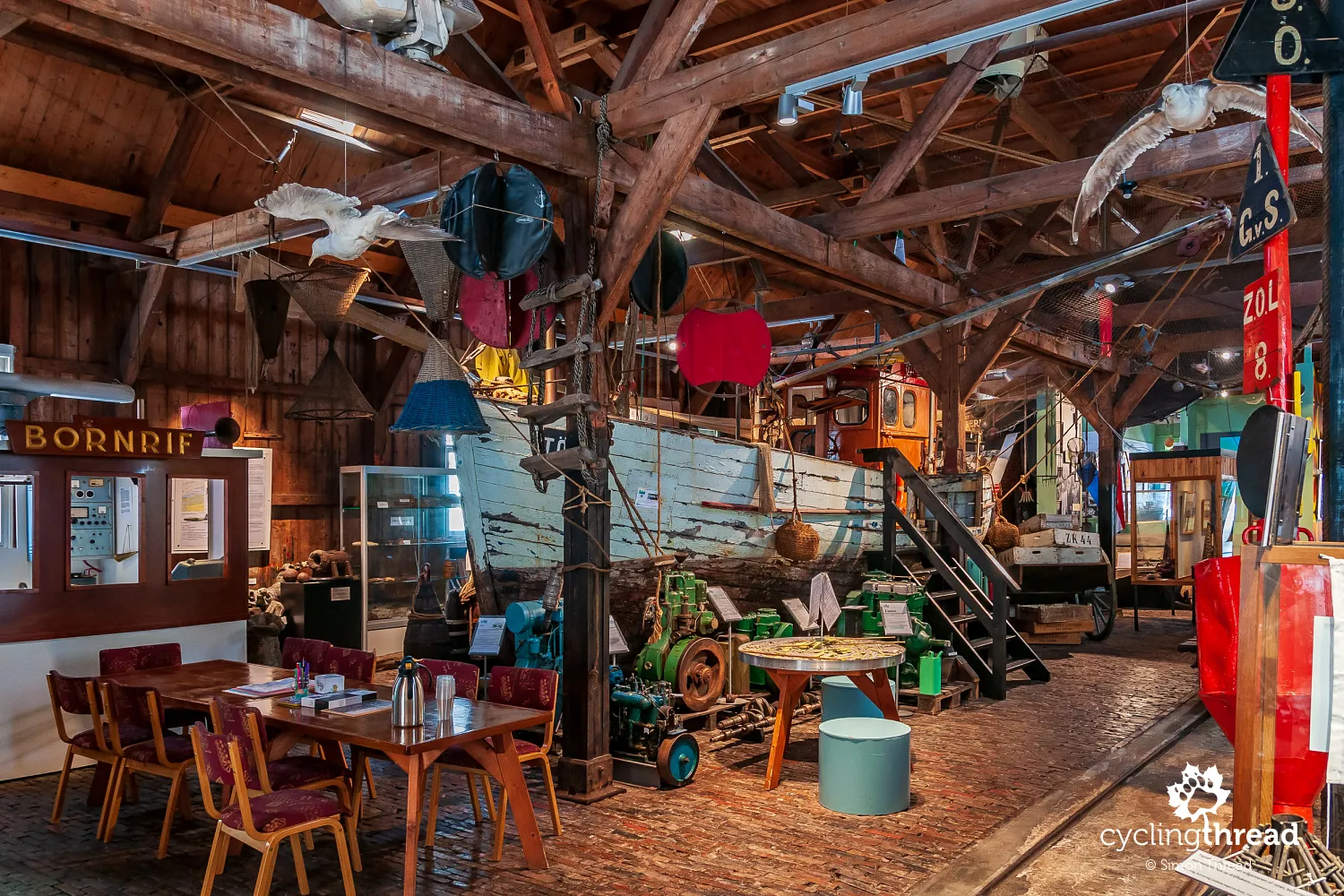
Interior of the Fishing Museum in Zoutkamp
The area stretching between the former Lauwerszee, now Lauwersmeer, and Groningen is Middag-Humsterland. Considered the oldest (or one of the oldest) cultural landscapes in Europe, what today is a flat plain was once two islands surrounded by sea waters - Middag and Humsterland. Nearby lies Groningen, which back then was almost by the sea! It was the defense against the sea, the construction of flood defenses, and active land reclamation by Frisian settlers that transformed the landscape into today's predominantly agricultural scene. The ancient history is reminded by well-preserved historic villages with preserved terps and the original street layout, like the "circular" Niehove or nearby Ezinge. Efforts are even being made to list Middag-Humsterland as a UNESCO site.
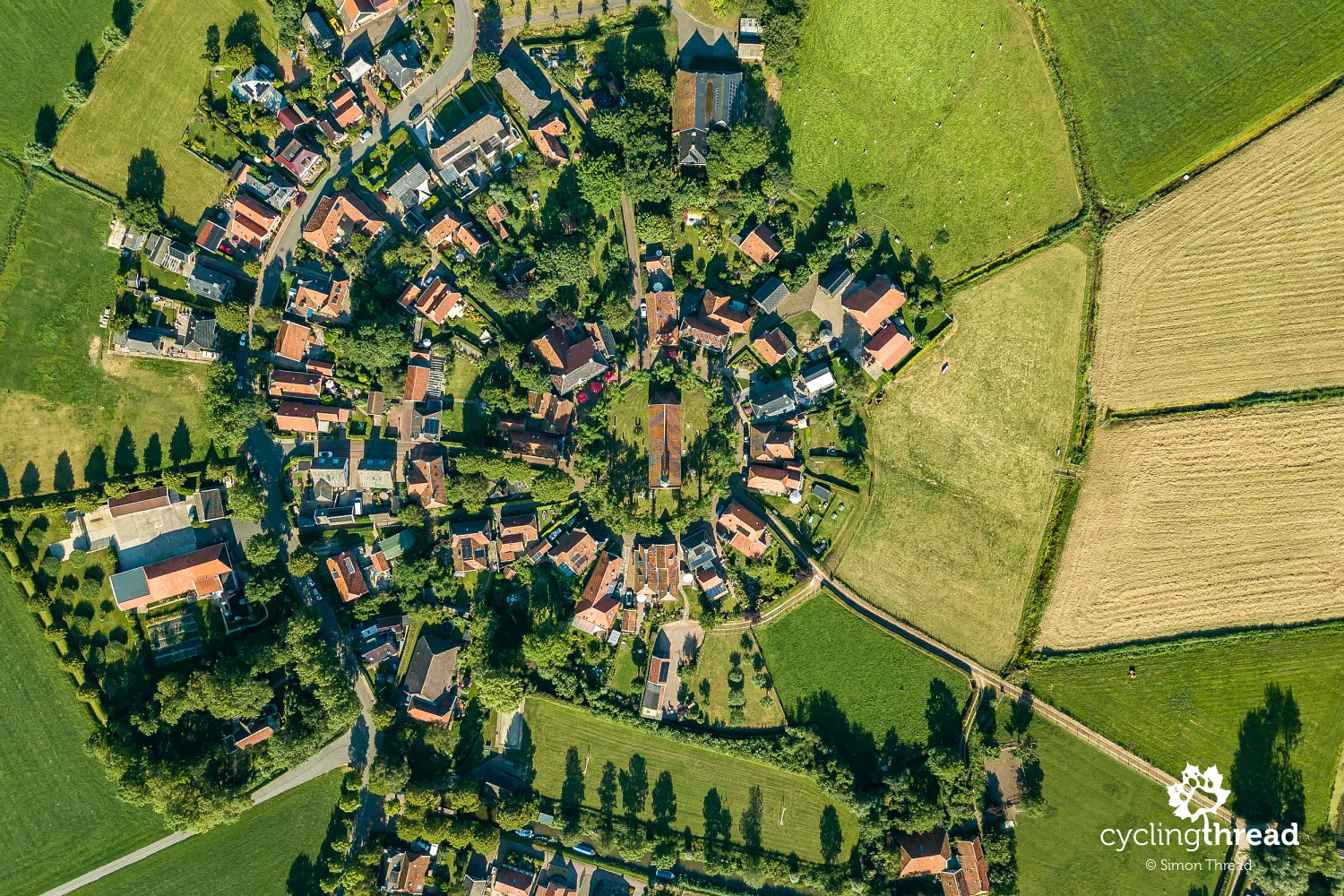
The oldest continuously inhabited village in the Netherlands
A well-preserved terp is located in the village of Ezinge, described as the oldest continuously inhabited village in the Netherlands. Archaeological research dates the oldest traces back to 300 BC, which would place Ezinge among the oldest villages in Europe. Viewed from above, the village's organized area layout is apparent: one-quarter is occupied by buildings, with the rest being fields and meadows. An interesting fact is that the church in Ezinge is a larger building, without a tower. Originally, it had a free-standing tower, to which a somewhat misleading building was later added. Among the village's visitors, during its millennium and a half existence, was the eminent Roman historian - Tacitus.
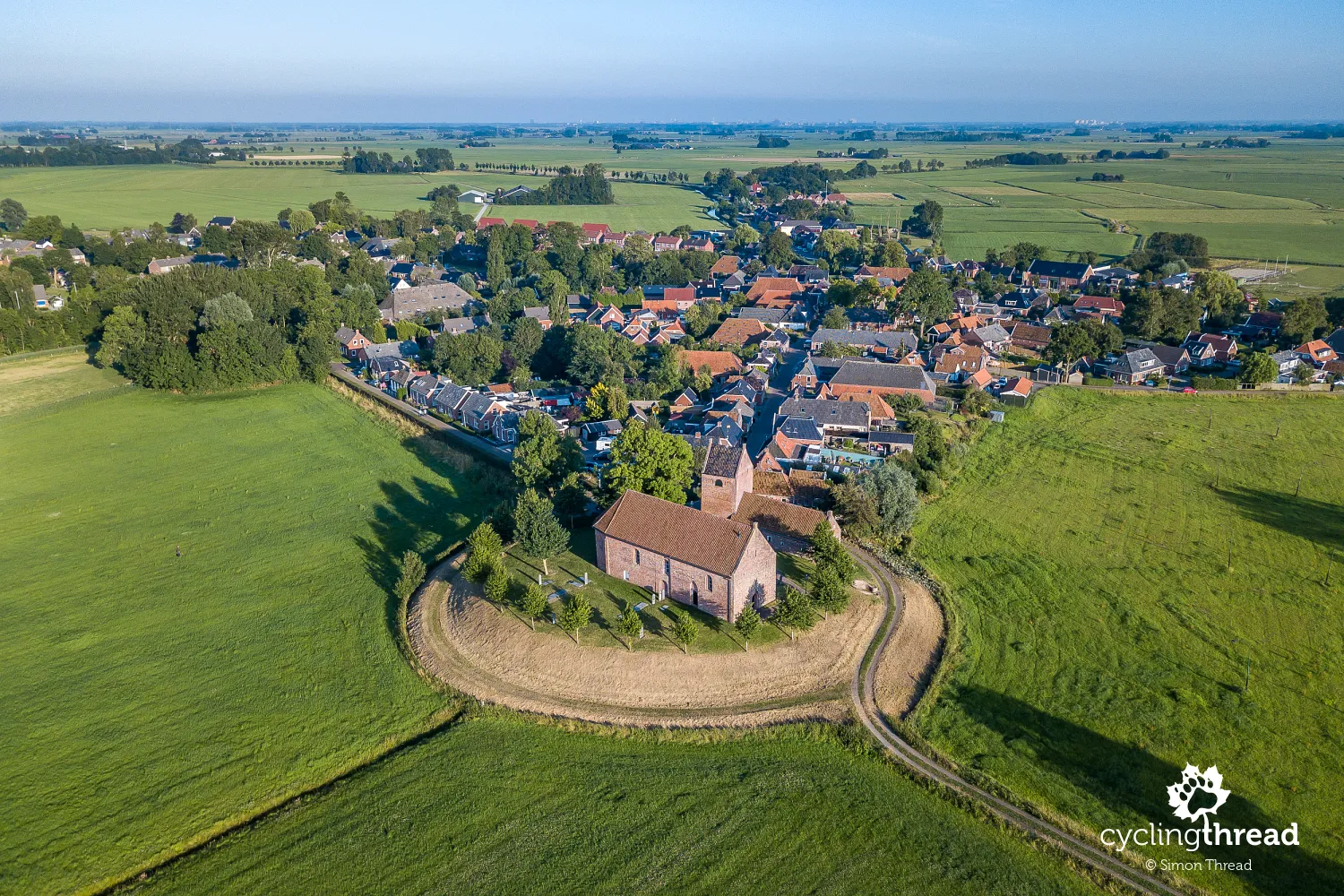
Residents of Breda remember the Poles
Visiting the picturesque villages of Middag-Humsterland and imagining traversing the old, frayed Frisian sea coast, we reached a cozy camping in Aduarderzijl, located by one of the Dutch canals. The sight of a Polish flag on our trailer greatly delighted one of the camping guests, a resident of Breda who was in the middle of a multi-day bike tour around the Netherlands. At times, we were almost embarrassed by the gratitude the Dutchman expressed for the actions of General Stanisław Maczek and his armored division, which liberated Breda during World War II. This Dutch cyclist was older than us, just over fifty, and he held a tremendous respect for the Polish nation.
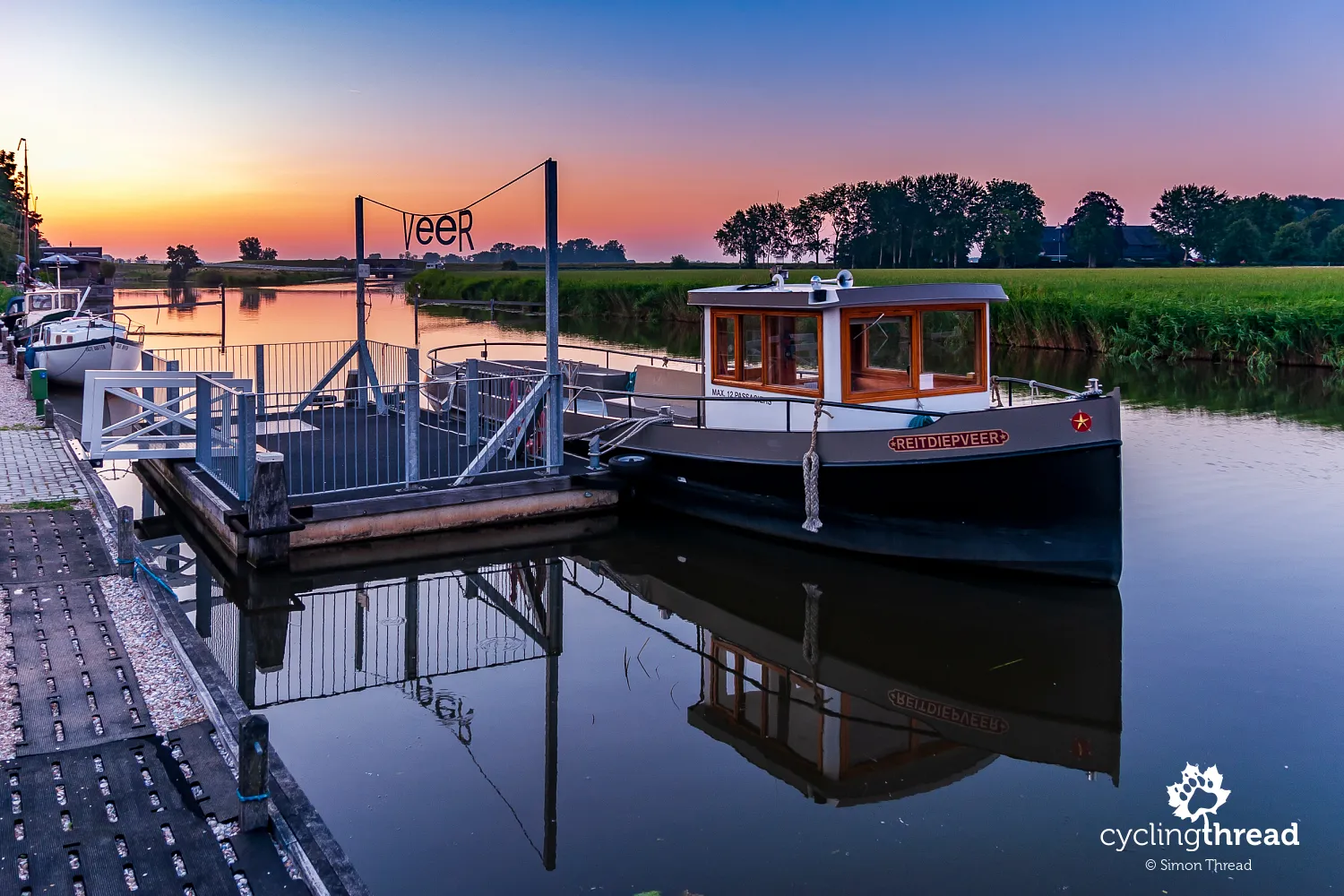
Boat trip with bicycles through the Dutch canals
Fortuitously, the very pleasant camping at Aduarderzijl was located right at the local ferry dock, which runs between Aduarderzijl and Schaphalsterzijl. We didn't hesitate long to take advantage of it and found we weren't the only ones to start our cycling day this way. Moreover, a later analysis of the map showed that without the ferry, we would have had to cover many more kilometers to get north through the maze of canals in this region. And although the small vessel, proudly flying the Dutch flag, carried us only about two kilometers, we were satisfied to have experienced this form of Dutch transport.
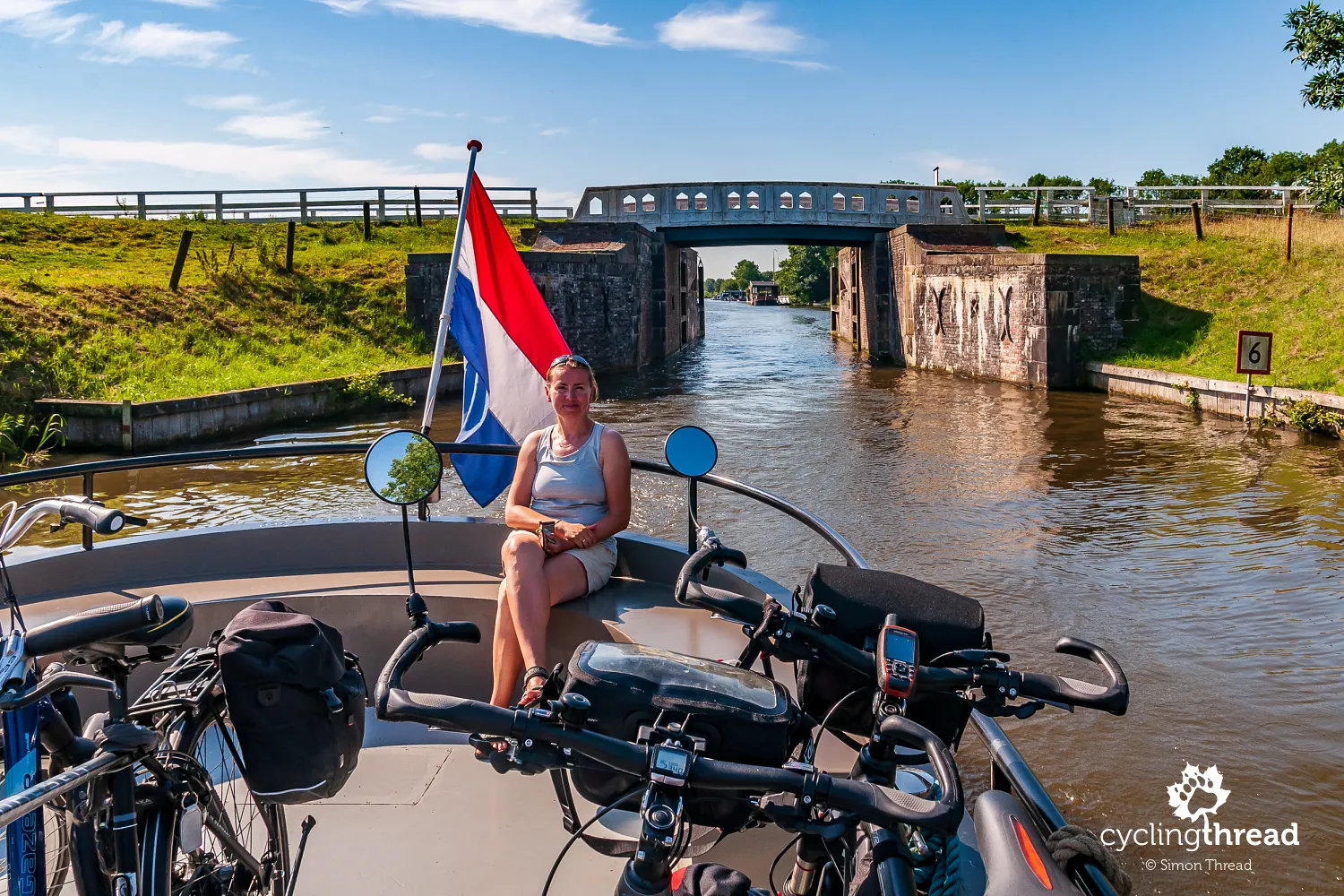
The Seal Rehabilitation and Research Centre
The Seal Rehabilitation and Research Centre in Pieterburen may reflect the Dutch global outlook and the care of the Dutch people for the broader fate of the world. This private facility is famous for taking care of young seals that come from all over the Dutch coast. I emphasize the seals' age because the center's staff deals exclusively with young individuals. Each seal goes through three stages of care here, with freedom being the fourth stage, where they are released back into the wild healthy and capable of independent existence. Interestingly, the center in Pieterburen has Europe's largest seal blood sample database. This place is nothing like zoos or seal shows - it's more of a hospital for seals with the possibility of visits by unrelated human species.
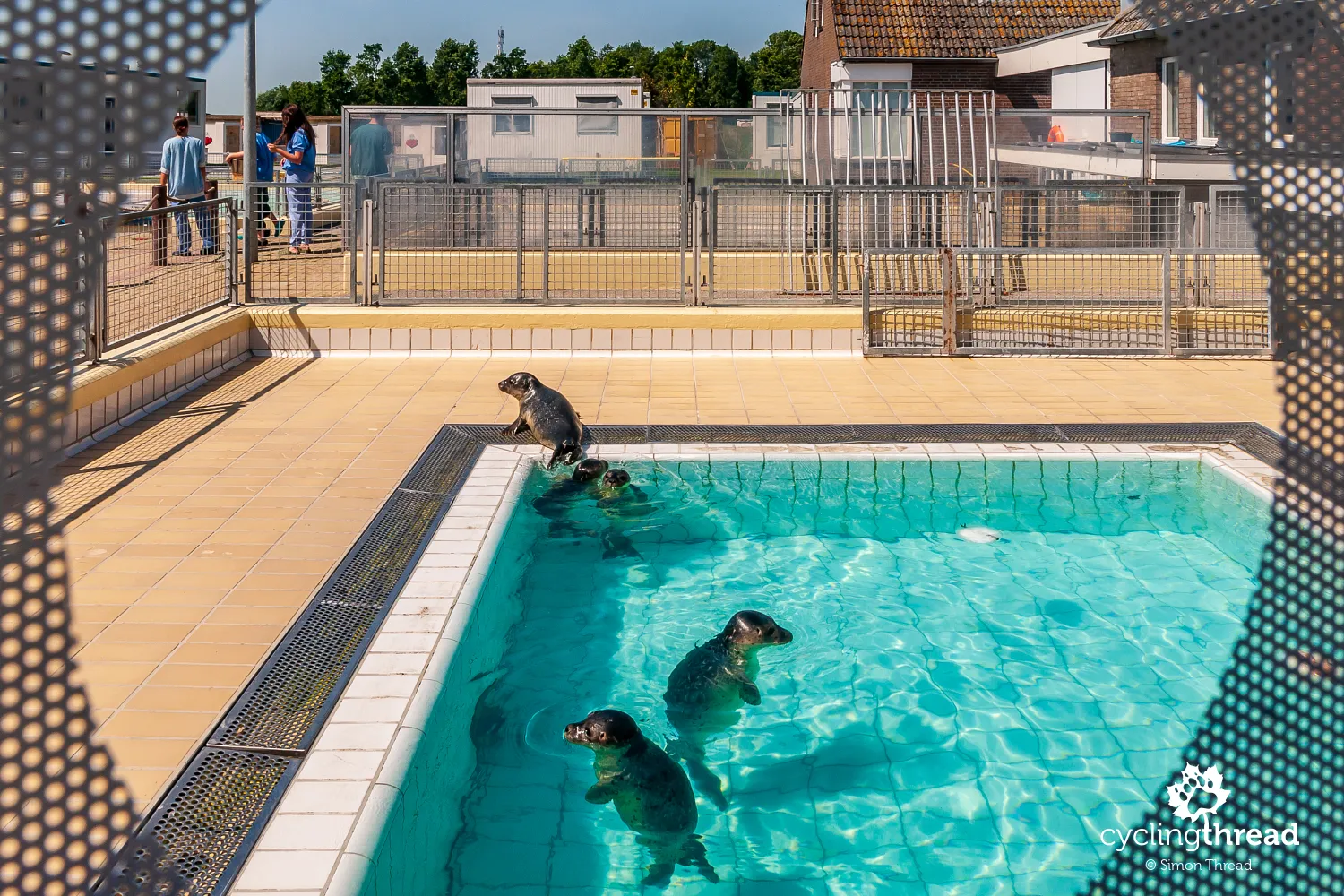
Menkemaborg Palace in Uithuizen
The Menkemaborg Palace in Uithuizen stands out in the idyllic, uncomplicated landscape of former Friesland. It is one of the 16 "borgs," sometimes also referred to as manors or castles, out of over 200 such buildings that previously existed in the province of Groningen. It was built in the 14th century, but its current, unchanged appearance comes from a reconstruction that took place in the 18th century. The interior preserves many original furniture pieces and decorations from that period, originating from the Menkemaborg itself and other similar places in the area. The surrounding grounds, including a recreated original garden with one of the oldest botanical labyrinths, are also breathtaking. It was worth detouring from our originally planned route along the Wadden Sea for it.
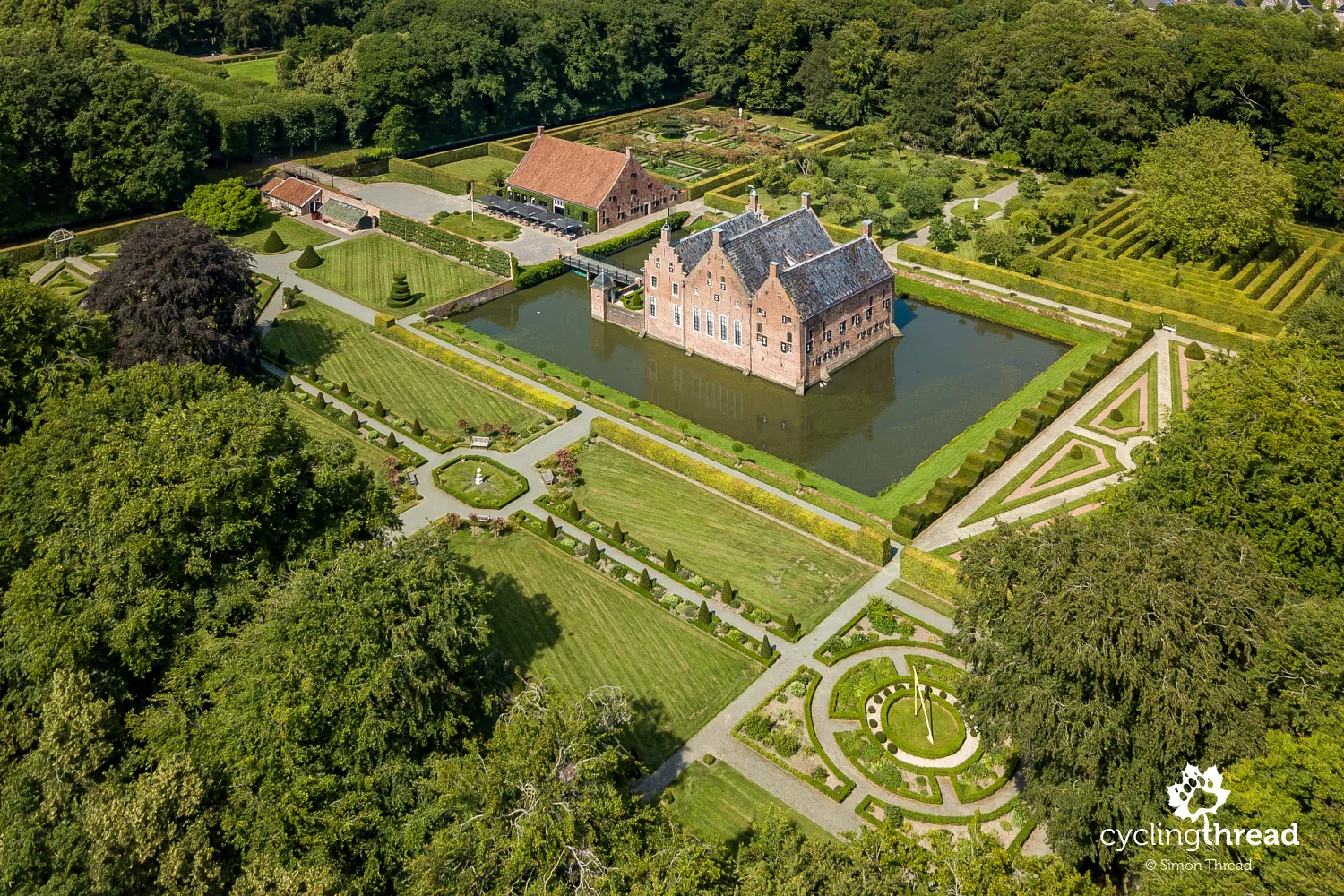
Eemshaven - a port on the Wadden Sea
Our impressions of exploring changed again upon returning to the Wadden Sea. This time we stood under the massive blades of a wind turbine, powering, among other things, the modern port of Eemshaven, built by the Netherlands in the late 1960s. Eemshaven is an entirely new entity created by the Dutch government during the post-war decades of economic growth. Due to its port access, and thus to any raw materials, as well as to on-site generated energy sources, and in recent years even to mid-Atlantic fiber optics and telecommunications cables, it's an ideal location for the development of many industries. Among others, the area houses coal and wind power plants, the shipbuilding industry, shipping companies, as well as a malt producer for beer and Google, whose one of the largest data centers is located near the port areas.
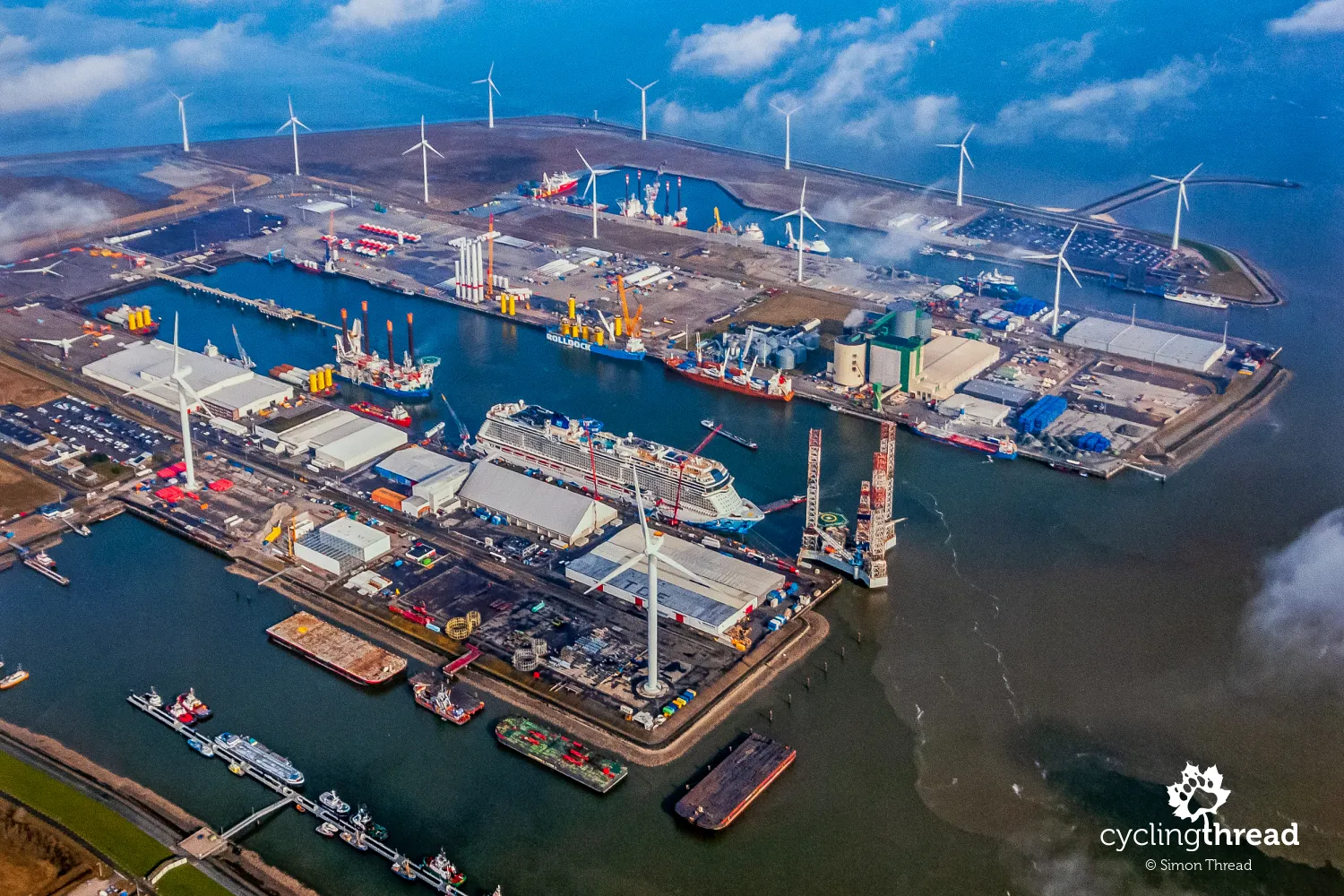
Hanging Kitchens in Appingedam
The most famous attraction of the small town of Appingedam, the last major location on our route before Groningen, are the so-called hanging kitchens. I suspect they do not represent a special heritage value but rather demonstrate the resourcefulness of Frisian hosts. The hanging kitchens in Appingedam were created out of... a lack of space in the local small dwellings. In this way, the clever residents of the city center built additional kitchen spaces over the city canal, increasing the surface area of their homes at a minimal cost. Today, it's a somewhat amusing curiosity worth including in a travel plan through northern Netherlands.
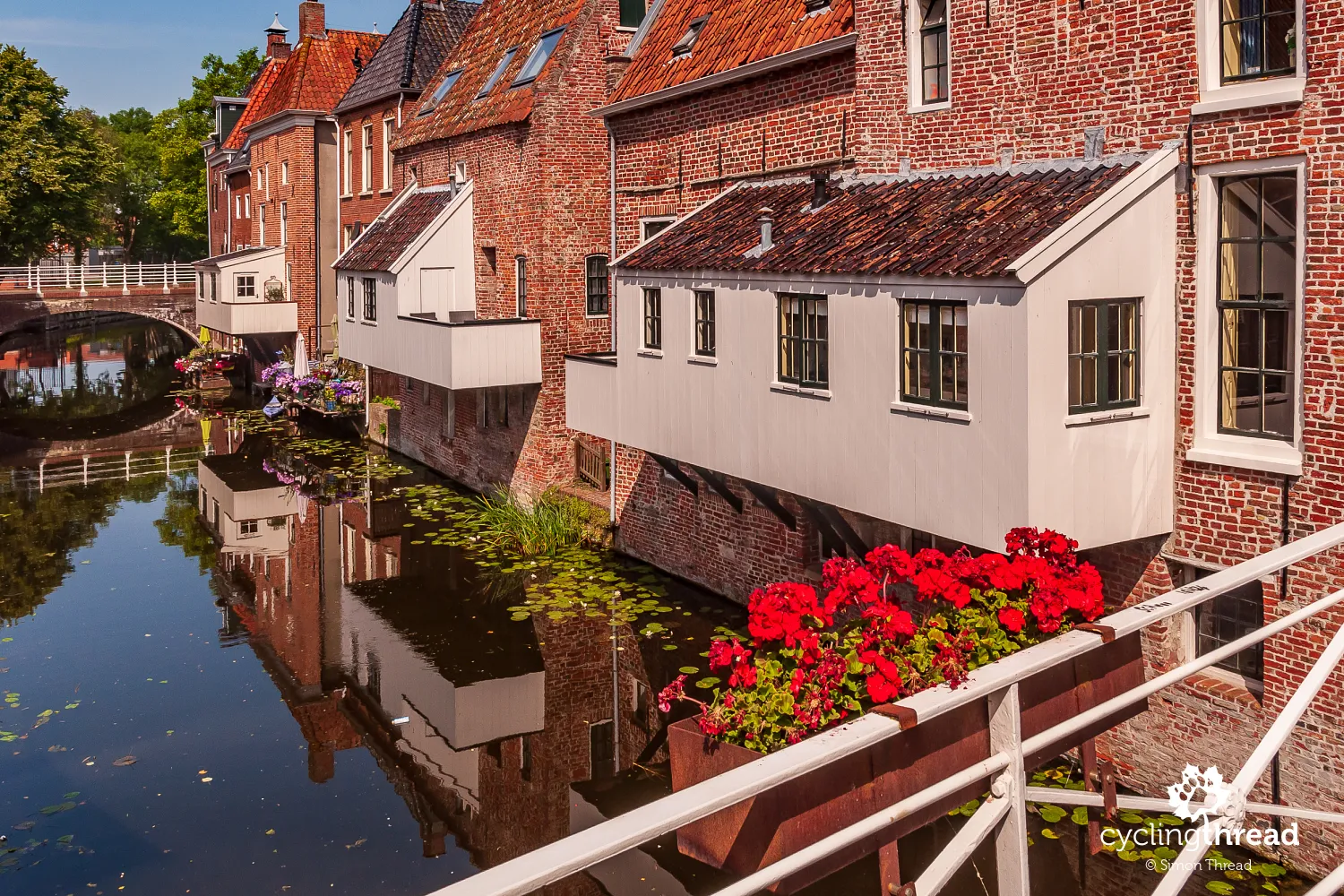
Hot Groningen at the end of the trip
Who would have thought that it would be in Frisian Groningen where we would experience the hottest day of our cycling trips? Precisely on the day we were ending our stay in the Netherlands, Germany in neighboring Lower Saxony recorded a record temperature of almost 43 degrees Celsius! In this high temperature, we explored the city, which was a bit of a disappointment. Perhaps it was just too large to maintain the atmosphere we admired in Leeuwarden? Groningen suffered greatly at the end of World War II, and today the city center has a fairly contemporary character. One of the preserved buildings and symbols of the city is the Martinitoren - the tower of St. Martin's Church, whose height was envied by the inhabitants of Leeuwarden in the Middle Ages.
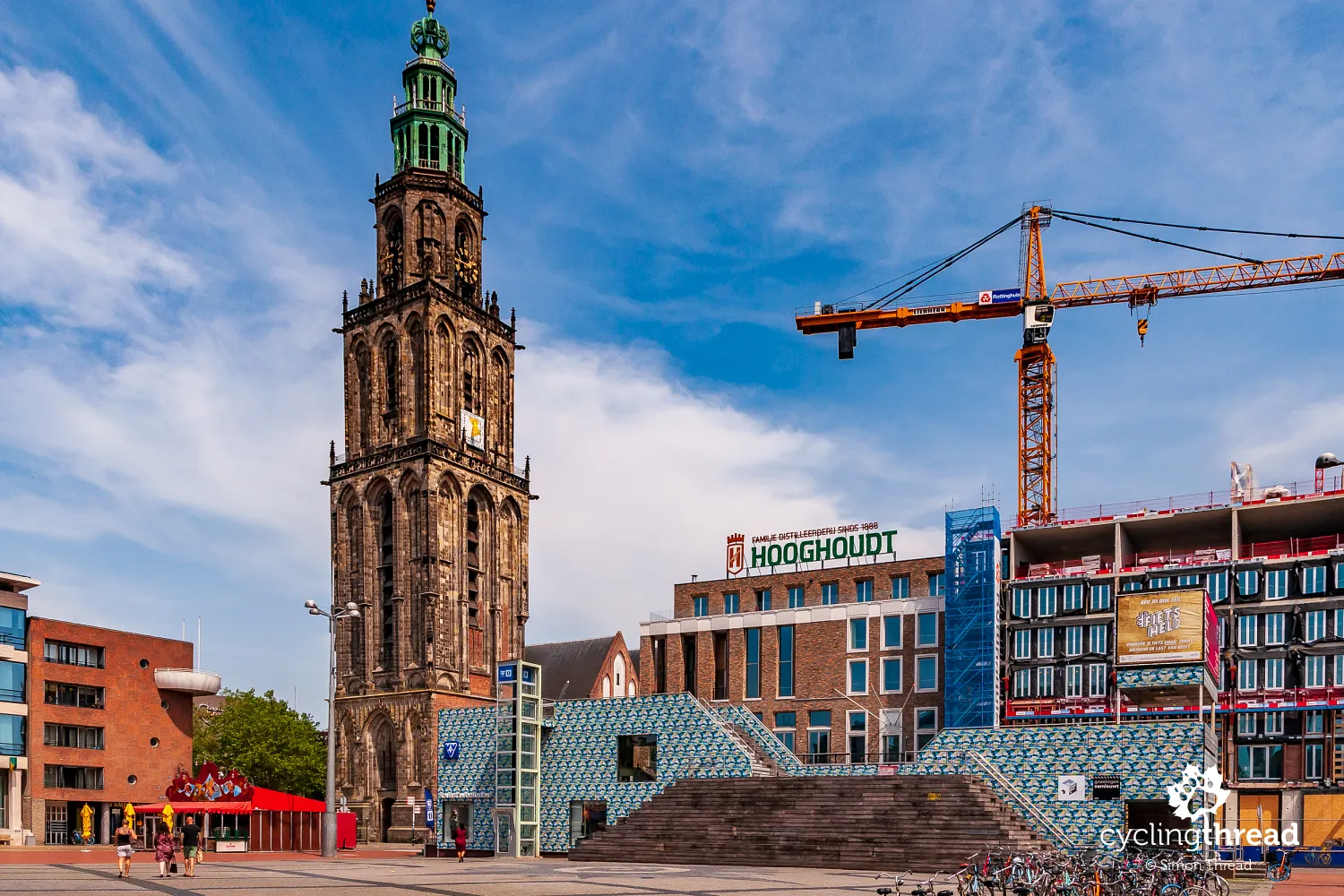
Across from the other end of the main square stands the beautifully preserved Gothic building of the Goudkantoor, fortunately saved from wartime destruction. Built as the office for the local tax collector, its name translates precisely to "Gold Office". Like the Martinitoren, the Goudkantoor is surrounded by modern architecture. And, true to a city with the highest proportion of cyclists in urban transport in the Netherlands, it's encircled by hundreds of cyclists of all ages. Bicycle traffic is allowed on all streets here, with most featuring wide, two-way bicycle paths.
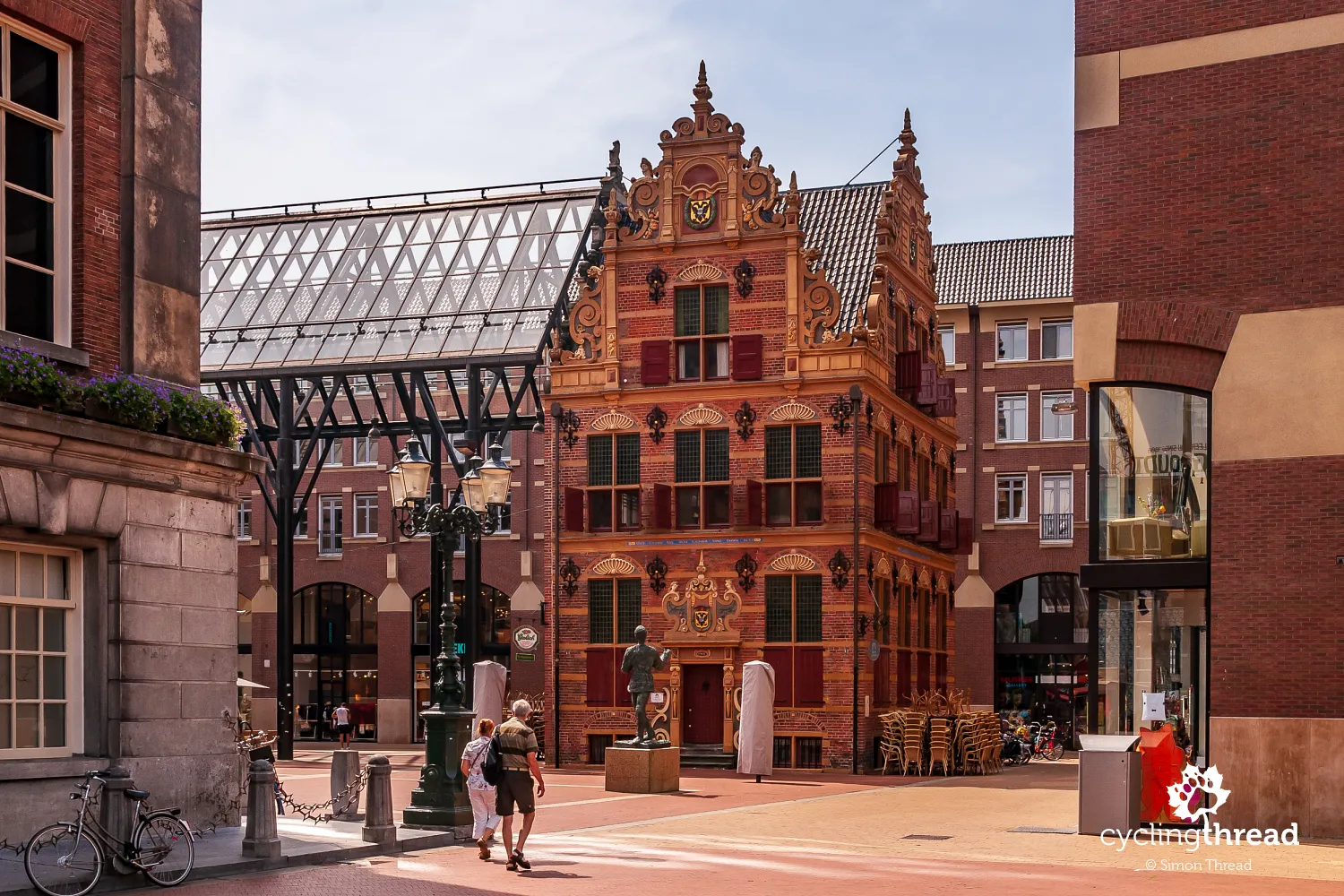
What to eat in the Netherlands? Kibbeling!
After somewhat similar German-Austrian cuisine in Saxony and Austria and then Italian food in South Tyrol, we were delighted to switch to a fish diet, widely available in the seaside Netherlands. The most amusing in taste and name was... kibbeling, which are chopped, fried fish pieces in batter, usually served with fries, salad, and sauces. Perhaps not everyone will praise us for recommending this not-so-healthy meal form, but we let our stomachs and... wallets decide, often indulging in this ubiquitous, affordable, and even among the Dutch themselves, popular dish.
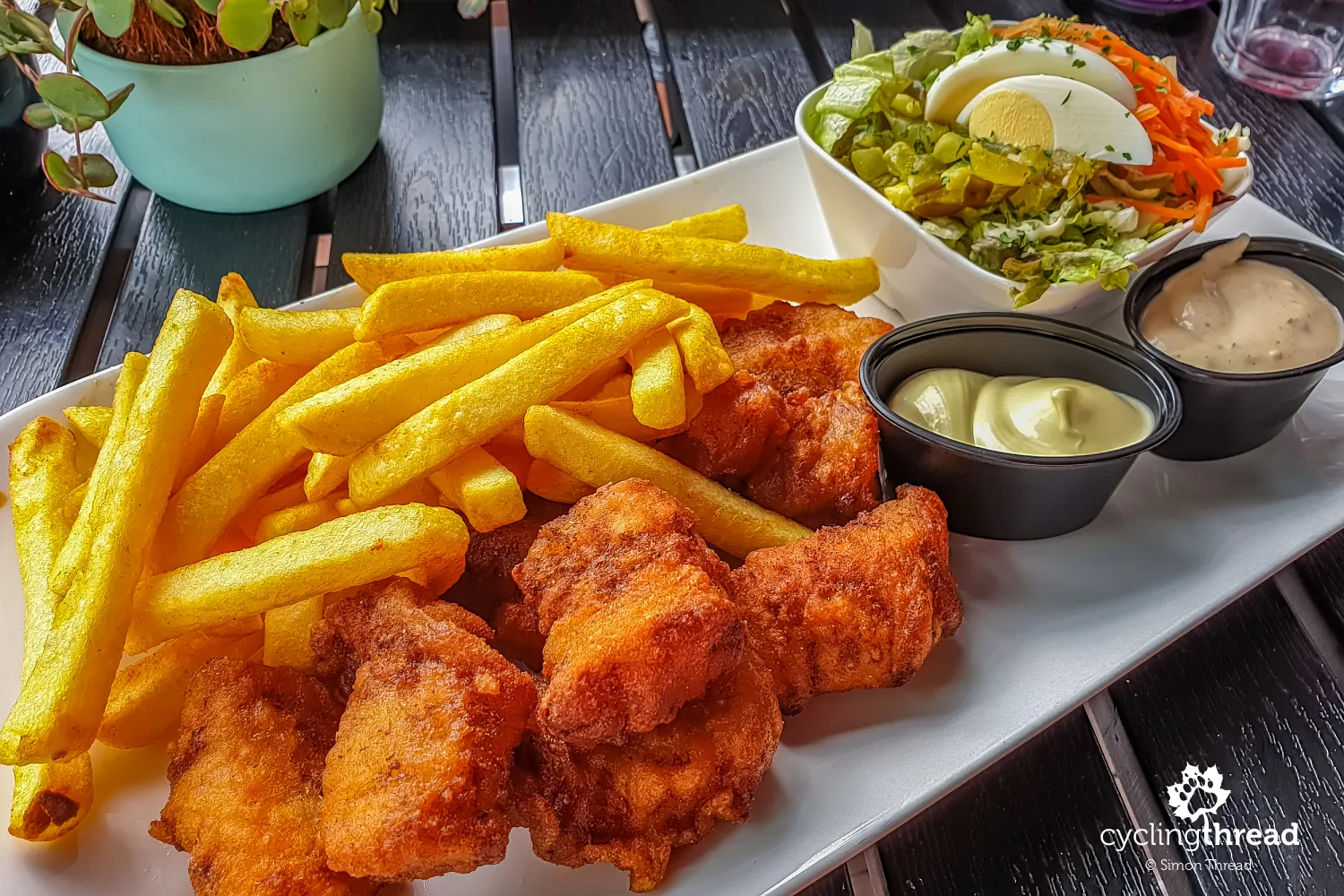
Discovering the best - the unknown
Our last cycling trips took place in the German-speaking part of Europe - Germany, Austria or northern Italy, which surprise us less and less. The trip to the Netherlands broke this short tradition and allowed us again to discover the best - the unknown. The culture of Friesland, the nature of the Wadden Sea, the landscapes of the northern Netherlands, or the cycling habits of the Dutch proved to be an immensely grateful subject for exploration. It's surprising, though, that despite the extraordinary cycling image and many easily accessible attractions, the Netherlands does not seem to be a frequent destination for holiday trips. Maybe this text will change that a bit?
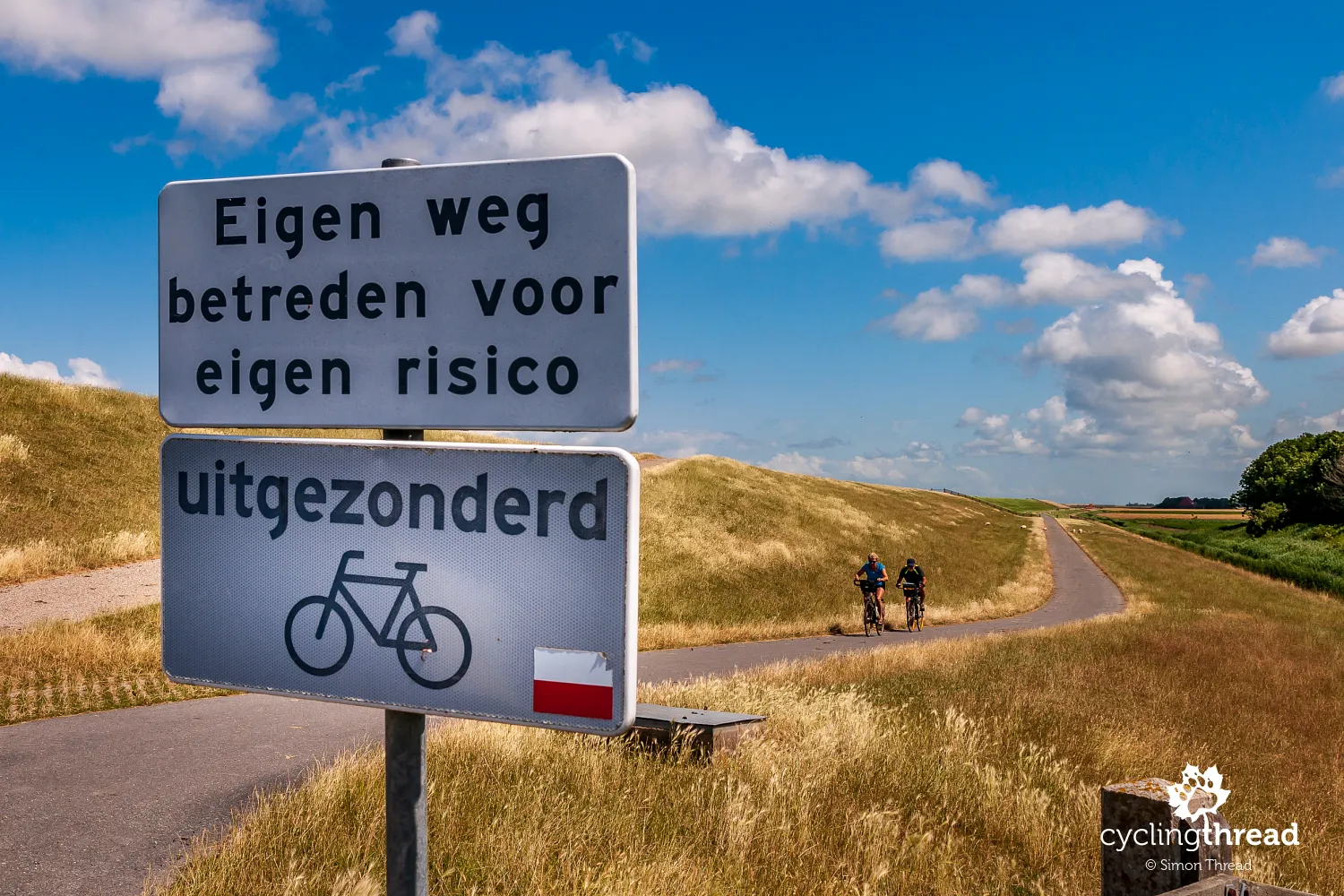
The Netherlands to officially become the Netherlands
As I write this article, news reaches me that the Dutch government has decided to change the international image of the country. The so called Holland will officially become the Netherlands, aiming to enhance the country's more attractive image. Thus, I inform the government in The Hague that no state rebranding will change our fond memories of Friesland and the province of Groningen, nor will it erase from memory the kind gestures towards us, that the stay by the Wadden Sea was an exceptionally pleasant cycling idyll. Idyll - yes, that's how I'll remember the north of the Holland. Sorry - from now on, the Netherlands!
Back to topHave a safe ride! 💚
Simon Thread
(Szymon Nitka)
I'm a passionate cycling traveler and the voice behind Cycling Thread. I explore Europe on two wheels, documenting the most scenic routes, inspiring places, and cyclist-friendly practices. My writing blends personal experience with practical insights and a deep love of travel. I'm also a contributor to National Geographic Traveler magazine.



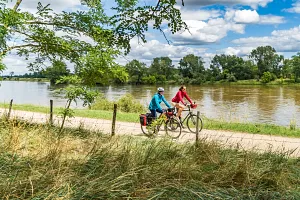
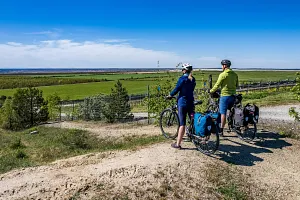
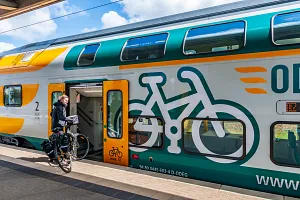
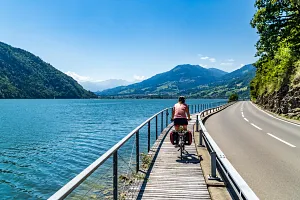
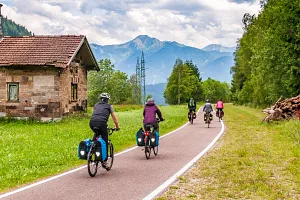
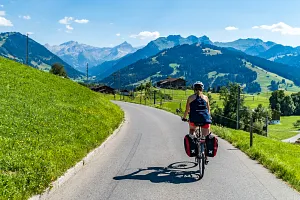
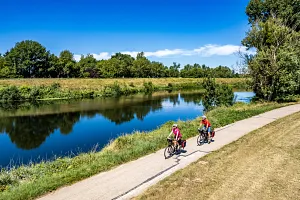
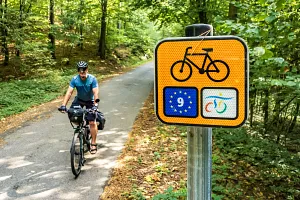
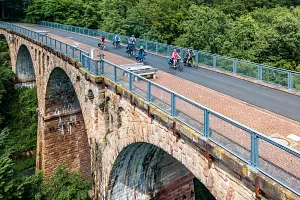
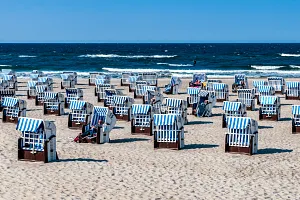
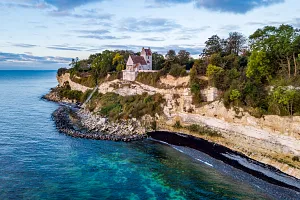
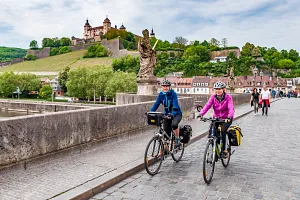
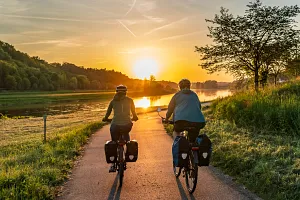
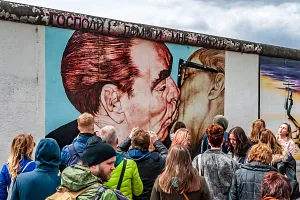
Your Comments
Add new comment